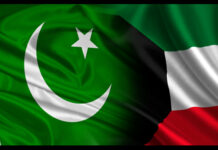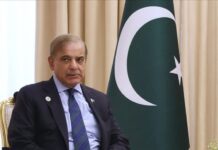Though it is a moot point what our political, socio-economic conditions should ideally have been today, had the road not been uphill all the way thanks to needless debilitating detours, self-inflicted wounds and deeply-felt absence of political legerdemain, the country has still covered a vast distance in the face of myriad obstacles and overwhelming odds, and even a degree of achievement in some spheres, though a lot still remains to be done, especially in the social welfare and poverty elimination areas. Starting from scratch, lacking basic infrastructure and skilled human resources, we still have come a long way from the humble and ‘moth eaten’ beginnings into which we were suddenly thrust as a newborn nation.
On the nation’s landmark 70th Independence Day, Profit celebrates the occasion by devoting its entire 20th Edition a ‘Pakistan Day Special’. What is more, while we are beset with many worrying problems and stories of despondency abound, Profit has decided to project hope and positivity about today’s Pakistan by recounting our successes and celebrating our heroes – as many as 50 of them, for the seven decades of our existence, chosen from all spheres of life.
Each of the 50 stories in this enlarged edition represents our peoples’ all-round ingenuity, genius for improvisation and innovation and successes in science and technology, art, culture, film and literature and sport – though the accent, this being Profit’s forte, shall remain on the economy. We hope that the narrative shall make us Pakistanis feel taller, and inculcate a sense of pride and achievement in our nationhood
1. On the threshold of a real takeoff
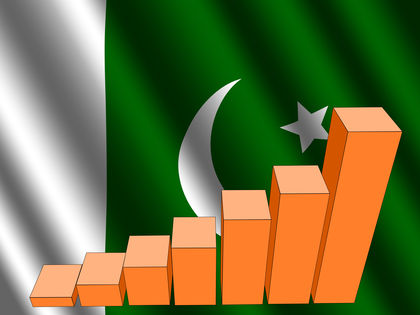
Pakistan’s economy
By: Ghulam Abbas
With its gross domestic product having crossed $300 billion, Pakistan now aims to be to be part of the elite club of leading world economies ‘G20’ by 2030.’
‘When it attained independence on August 14, 1947, it was a very poor and predominantly agricultural country. Seventy years on, it is semi-industrialized, and is now the 25th largest in the world in terms of purchasing power parity (PPP) and 40th in terms of nominal gross domestic product (GDP).
Anticipated to be 20th largest in 2030
According to PwC, the world’s largest accounting firm, Pakistan’s economy with a projected $4.2 trillion in size, is likely to become the 16th largest by GDP PPP, 18th largest economy by GDP in 2050 and 20th largest in 2030.
As per official statistics, which so many take with a pinch of salt, Pakistan’s average economic growth rate in the first five decades (1947–1997) has been higher than the growth rate of the world economy during the same period. Average annual real GDP growth rates were 6.8% in the 1960s, 4.8% in the 1970s, and 6.5% in the 1980s. Average annual growth fell to 4.6% in the 1990s with significantly lower growth in the second half of that decade. At at 0.36%, the lowest growth rate was recorded in 2009.
Though the overall economic output of the country during the past 70 years has maintained growing trend, its economy in various snatches in time was characterized as unstable and highly vulnerable due to internal and external crisis. However, becoming resilient in the face of multiple adverse events, the economy has come “out of crisis”, said Christine Lagarde, the IMF chief in October 2016. “Pakistan is now in a better fiscal position and certainly out of economic crisis,” she said then.
“Pakistan was on the verge of economic collapse and faced bankruptcy but since 2013, the country’s economic outlook improved and went from negative to stable to positive,” Finance Minister Ishaq Dar claimed, adding there has been visible growth in the national economy and for the first time in 10 years Pakistan has crossed the five per cent GDP growth mark (5.28%) in 2016-17. “Pakistan’s growth is far better than the global growth. By 2050, Pakistan would surpass Canada, Italy and South Korea,” he said.
Increase in per capita income
As per the Economic Survey of Pakistan 2016-17, the per capita income in US dollar terms has increased from $1,531 in FY 2016 to $1,629 in FY 2017. The government functionaries claim, the per capita income has registered an increase due to stability of the rupee in the international market as well as lower population growth of Pakistan. Though some exporters and economic analysts believe that the rate has been maintained artificially, that rupee is overvalued, and, this has impacted our exports, which have steadily declined substantively over the last four years. Similarly, in the absence of the statistics with the census yet to be made public, it is difficult to understand as to how claims of lower population growth can be substantiated.
The World Bank predicts that by 2018, Pakistan’s economic growth will further increase to a ‘robust’ 5.4% due to greater inflow of foreign investment, specifically for the China-Pakistan Economic Corridor (CPEC). The CPEC is going to open doors to immense economic opportunities to Pakistan.
On the other hand experts, keeping in view the rising trade deficit, external debt and fall in exports and foreign exchange reserves, expect difficult economic situation in near future. The trade deficit during the fiscal year 2016-17 was recorded at $32.578 billion as compared to the deficit of $23.898 billion during the fiscal year 205-16, showing negative growth of 36.32 percent. Foreign exchange reserves, according to SBP, fell $153 million to $20.283 billion during the week ended July 28. Besides, the total external debt has increased by 30 percent to $79.2 billion from July 2013 to June 2017. In 2013, Pakistan’s external debt was $60.9 billion, which increased to $65.4 billion in 2014. In 2016, it reached $73.1 billion.
But all in all, despite many travails and setbacks along the way, Pakistan indeed has come a long way in the last 70 years. Though it has been on the threshold many a time only to fail in making it count, by the looks of it, it now seems to be taxying for takeoff.
2. Pakistan Stock Exchange

Resilient and profitable
Farooq Baloch & Arshad Hussain
When the much-talked-about management buy-out of Engro Engro Corp. was taking place in 1991, some of its employees sold their homes and moved to rented houses while others sold their wives’ jewelry to buy the company’s shares.
Today, Engro is Pakistan’s largest private sector conglomerate – and 4th largest listed company in the benchmark KSE-100 Index – with a market capitalization of $1.7 billion. In the 26 years since the management buy-out, Engro’s revenues have grown more than 123 times, needless to say, the stock price did quite well and those initial investors were materially better off.
“With these [capital] gains, they married their daughters off, educated their children and bought property later on,” former CEO Asad Umar told Profit.
Engro is a good example of how Pakistan’s capital market expanded investors’ worth and opportunities – it is not the only one though.
The cement stocks, in their entirety, remained the most robust among all investable sectors in the recent past. Explained simply, had someone invested Rs1 million in the stocks of Kohat Cement on January 1, 2011 when it was trading at Rs6.5 per share, he would have made Rs40 million by September 2016. That translates into a 60 percent return on investment per month, coming on the back of a whopping 3,854 percent appreciation in the stock’s price over the entire period, not counting another Rs2.9 million the company paid in dividends.
Pakistan’s stock market has many companies that gave abnormal returns over the years, making it one of the world’s most exciting markets for investors. It gave 46 percent return in 2016 and ended up as Asia’s best-performing market, and globally the fifth-best.
 The robust performance helped it regain the title of ‘Asian Tiger’ and join Morgan Stanley Capital International’s Emerging Market Index on July 1 this year, a classification it had lost nine years ago after the market had crashed. Though MSCI upgrade became effective on June 1, the market had been demonstrating a bullish trend in the days leading to the announcement with the benchmark index hitting its all time high of 52,387.87 points on May 24, 2017.
The robust performance helped it regain the title of ‘Asian Tiger’ and join Morgan Stanley Capital International’s Emerging Market Index on July 1 this year, a classification it had lost nine years ago after the market had crashed. Though MSCI upgrade became effective on June 1, the market had been demonstrating a bullish trend in the days leading to the announcement with the benchmark index hitting its all time high of 52,387.87 points on May 24, 2017.
Prior to the announcement, market analysts were expecting foreign inflows of up to $300 million with prediction that the index would hit 56,000 points level by end of 2017 – what followed, not many had imagined though: Frontier Market Funds, which at the time retained $7 billion worth of investment in PSX, went on a selling spree, bringing the index crashing down by 1,810 points or 3.57 percent on day one of its inclusion in the MSCI EM Index. It was Asia’s worst performer on that day.
“MSCI reclassification of the market has nothing to do with the fall of the index. Rather the recent budget announced by Ishaq Dar was the main reason behind the loss of around 10,000 points [the market shed] during the last 40 sessions,” AKD Group’s Chairman Aqeel Kareem Dhedhi told Profit, referring to the government’s decision to impose taxes on dividends and capital gains along with introduction of super taxes for the 2017-18 fiscal.
With political uncertainty reigning, the benchmark index remained under pressure but even after Sharif’s ouster, bears continued to rule the market. At the time of filing this report, the PSX had shed 6389 points, down 12 percent since its peak.
“PSX remains the world’s third best-performing market over the last 17 years,” Insight Securities’ Director Research Zeehsan Afzal tells Profit. During that period, the market saw turmoil much worse than the current one owing to various events including the Lal Masjid incident.
Afzal says if one ignored the recent plunge, PSX would be the second best-performing market over the length of that period, which reflects its resilience. The current bearish trend would be over too,” he adds asserting there is enough potential in the country to keep the market going.
The average per capita energy consumption of Pakistan is only about 80 watts and that includes industrial and public sector consumption as well, Afzal says, which is not much, indicating room for growth. “There is a reason why steel makers are doubling production and cement manufactures have increased their capacities,” he said. “Even if our GDP growth remains above 4 percent, the market will continue to give fabulous returns.”
The analyst went on to say the market will expand because the fundamentals are strong and valuations are attractive, and Shahbaz Ashraf, Head of Research at Arif Habib Research, seems to agree. “Despite all the dips and political uncertainty, the KSE-100 Index has performed well and given higher dividends,” Ashraf says. The index is currently trading at a cheaper price to earnings multiple of 9.3x (2017) compared to 14.0x, average of its peers in the Asia Pacific region, he said. Pakistani stocks are offering a dividend yield of 5.2 percent – twice the average (2.4x) offered by the region.
“Despite all the dips and political uncertainty, the KSE-100 Index has performed well and given higher dividends,” Ashraf says. The index is currently trading at a cheaper price to earnings multiple of 9.3x (2017) compared to 14.0x, average of its peers in the Asia Pacific region, he said. Pakistani stocks are offering a dividend yield of 5.2 percent – twice the average (2.4x) offered by the region.
The country would not have regained the EM status, had it not met all the quantitative and qualitative criteria for the upgrade, and that includes size and liquidity. PSX market capitalization has almost doubled from Rs6 trillion in 2013 to Rs11 trillion on August 7 as 26 new companies went for IPOs during the period – five of which came in the first seven months of the current year, not counting Dalda Foods, and AGP that have already announced their IPOs this year but have yet to be listed.
At a recent training at Arif Habib Corporation’s headquarters in Karachi, speaking to business journalists, Ashraf said analysts sitting in the market understand its dynamics and fundamentals better than international research firms.
“PSX has given an average 24 percent return (in dollar terms) during the past 10 years,” Ashraf said, delineating PSX’s profitability despite all the political turmoil. This comes from someone from the Arif Habib conglomerate that has yielded a fortune from the PSX.
“Habib, who started as a stockbroker more than four decades ago, has expanded his Arif Habib Group into a 13-company business that has invested $2 billion in financial services, cement, fertilizer, and steel factories since 2004,” Naween Mangi wrote in a 2012-report for Bloomberg. “His group and a clutch of others have become conglomerates of a kind that went out of fashion in the West but seem suited to the often chaotic conditions in Pakistan,” she added.
3. CPEC: Linking Pakistan to China and global value chain

Potential to transform Pakistan
By: Mian Abrar
The China-Pakistan Economic Corridor (CPEC) is a grand scheme, a bold blueprint that has the potential to transform Pakistan’s economy in a myriad ways, taking the nation to new highs. That is perhaps why all political parties and national institutions across the spectrum have taken its proprietorship.
Under its vision to link the global trade through sea lanes and road links our friendly neighbour from across the Himalayas, China has tagged CPEC as the flagship project of One Belt, One Road.
An across the nations and continents behemoth, China is investing around US$59 billion in Pakistan alone on various CPEC projects – ranging from energy projects like hydroelectric dams, and coal and atomic power plants to infrastructure involving roads, railways, ports and industrial clusters, including free economic zones.
The Gwadar Port, however, remains the most talked-about project of China, acting as a hub for Chinese trade far away from the Chinese seas. The Port would also enable China to bypass the troubled waters of the Strait of Malacca in South China Sea, the Strait of Mandeb, and the Indian Ocean, directly putting the Chinese shipments into the Strait of Hormuz – the prized space China is aiming at to expand its outreach in the energy hub of the world.
2017 is the Takeoff Year for the CPEC as 19 out of the 39 early harvest projects of the game-change have either been completed or already are in an advanced stage, with an estimated US$19 billion already spent.
The Chinese engineers and the workforce are indeed hard taskmasters, and the results of their labours is Pakistan are pulling another wonder of the world by completing these projects ahead of schedule. Setting an extraordinary pace, the CPEC looks set to shock the world.
Of the total 51 CPEC projects, Balochistan has won the lion’s share with 16 projects, closely followed by Sindh – with 13 ventures, while the Punjab has 12 and the Khyber Pakhtunkhwa another eight. Gilgit-Baltistan (GB) and Azad Kashmir have landed one project apiece. projects are in .
Out of the 19 early harvest projects having already been commissioned or close to completion, eleven are in energy sector while others are related to transport and infrastructure. The CPEC also provided a launching pad to foreign and local investments in the fields of high-capacity industrial units, factory-to-market road transportation and distribution services, bulk transit of goods by rail, dry ports along its routes and storage facilities for transit food and goods.
Mr Zhao Lijian, the acting ambassador of China, told this scribe that the sincerity level of the Chinese leadership and its investors towards Pakistan could be gauged from the Sahiwal Coal-Fired Power Project was completed ahead of schedule when the company was yet to reach its financial close.
“Under the law, the company would be able to seek loans once it reached the financial close, so the company invested its own finances. This reflects the level of Chinese commitment towards the CPEC,” said Zhao Lijian said.
Mr Zaheer Dar, Consultant, Center for International Entrepreneurship & Trade, says that there was a need to turn the economic corridor into a corridor economy.
“Agricultural sector is the key in economic turnaround for Pakistan. I believe CPEC has capacity to create 60 million direct and indirect jobs for local Pakistanis,” said Dar, since relocation of many industries from China to Pakistan is on the cards.
“The cost of labour in China has doubled between 2009-2014, and again redoubled in 2015-16, making the Chinese companies to look elsewhere for their labour requirements. Hence relocation of industry in steel, textiles etc. is on the anvil,” he added.
The Djibouti and Gwadar Ports would have a trade link as China’s trade to Africa takes place from Djibouti.
“Pakistan’s systems compared to Africa are more robust. Since there were street protests in Africa and Sri Lanka, lessons were learnt and China would not repeat the same mistakes all over again. We need to move from the European mode of manufacturing into Chinese mode of manufacturing to match the Chinese influx,” he added.
Pakistan, he said, needs to integrate with global manufacturing chain and joint ventures is the model that we need to adopt. “We can’t remain in manufacturing isolation.”
Pakistan could also become an attraction for the Chinese tourists, he added.
Yasir Khan, a scholar at Center for Excellence CPEC, told Profit that it is an internationally established norm that masses living anywhere in the world could be pulled out of poverty with mass economic activity that in itself has multifaceted benefits.
“The CPEC as a colossal economic venture, opening up the corridors of creating economic ascendance positively reflecting in changing lives of common people of Pakistan,” he said.
He said, adverse law and order coupled with long standing energy crisis for years have crippled Pakistan’s economy and thus far defeated any inflow of international investment rather domestic investors were also opting for other avenues.
“International investors who were shying away from investing here are now looking forward to take benefit of the CPEC economic boom. This put together more than suffices for us to believe and trust that CPEC would change the destiny of Pakistan,” he concluded.
4. From energy deficit to energy surplus

Lighting up the nation
By: Ahmad Ahmadani
Though Pakistan is facing severe electricity supply shortages, causing forced power outages over the last decade ranging from six to eight hours a day in urban areas and up to 18 hours in rural areas, however, several bright spots are beginning to emerge in the country if one desires to connect the dots.
Huge local and foreign investment for large number of water projects is underway to meet the energy shortfall and to cater to the future energy needs of the country. And, it is expected that significant addition of power to the national grid with the completion of ongoing projects will meet the hidden demand and will contribute towards eliminating load-shedding in Pakistan for all times to come. Also, increased power generation is expected to move the energy deficit country to an energy surplus country besides contributing towards economic growth, employment generation, increased industrial activity and foreign investment.
Shamsuddin A. Shaikh, Chief Executive Officer, Sindh Engro Coal Mining Company (SECMC) said over the past decade Pakistan has faced chronic electricity shortfall. As a result, the government of Pakistan has been incentivizing investment within the power sector with guaranteed returns, tax breaks and upfront and cost-plus tariff regimes. As a result, significant investment is being undertaken in the power sector.
Massive public outlay

Available documents disclosed that the government’s spending on water and power projects would be Rs550 billion during the current financial year 2017-18. Also, this amount will be spent on the ongoing and new schemes in the Public Sector Development Program (PSDP) for 2017-18.
Timeline for the completion of the ongoing power projects suggests, these will be completed by or before March 2018. And with the commissioning of these projects a total of 11131 mega watts will be made available to the national grid by March 2018.
For instance,1,180MW Bhikki LNG project is scheduled to be inaugurated by first week of this October, while 1,200MW Haveli Bahadur Shah expected to achieve CoD (commercial operation date) at full capacity by November, and 1,200MW Balloki power project is ready for inauguration. Similarly, 1,200MW Balloki power project, and the 340MW Chashma-IV nuclear power plant are ready to start production. Also, major coal power project of 1,320MW at Port Qasim is almost ready for completion and its sponsors had sought dates for inauguration by the now disqualified prime minister in the first week of September. Furthermore, SECMC’s Thar Coal mine with a capacity of 3.8 Mt/a will achieve its CoD in June 2019 and then immediately has plans to expand to its capacity to 7.6 Mt/a to cater to another 660MW generation capacity. And, the groundbreaking ceremony of the 4320MW Dasu hydropower project is also expected very soon. While Wind/Bagasse (350 ) MW, Patrind HPP Hydel (147 )MW, Faisalabad Gas (250 MW), Neelum Jhelum (969 MW) and Tarbela 4 Extension (1410 MW), Port Qasim Power Plant (1320 MW) and the under-construction 969 MW Neelum–Jhelum Hydropower Plant and 1,410 MW Tarbela IV Extension Project will add to Pakistan’s electricity grid hopefully between the given timeline.
Pakistan has also been looking forward to import 1,000mw electricity from Tajikistan and Kyrgyzstan as part of the Central Asia-South Asia Electricity Transmission and Trade Project (CASA-1000), which is expected to be completed in late 2018.
Moreover, primarily coal-based power projects, with a cumulative capacity of about 5,000MW, are scheduled to be operational during 2018/2019.
Revamping distribution infrastructure

Much of Pakistan’s power generation and distribution infrastructure was built in the 1960s and 1970s. It is now reaching the end of its operating life and needs to be replaced. Currently the system is barely able to cope with the existing power generated. Transmission lines, cables and transformation copper parts are dilapidated due to inadequate upgrading, repair and maintenance, while most transformers are overloaded with little or no maintenance.
However, approximately $33 billion Chinese investment under the CPEC (China-Pakistan Economic Corridor) is on its way for energy related project Power and planning ministries have initiated above $ 30 billion worth 26 power projects with installed capacity of 18,000 megawatt. As part of the “Early Harvest” scheme of the CPEC, an estimated 10,400 MW of electricity are slated for generation by March 2018. Similarly, at present an addition of 200 mw of wind energy and 100mw of solar energy are planned projects within CPEC.

Also, to improve system resilience, under the CPEC, an 878 kilometre long 4,000MW transmission line is to be constructed for power dispersal from south Pakistan to Lahore and Faisalabad in the North. This key link in the transmission infrastructure is expected to be in place by end-2018 at the earliest. Besides, it is estimated that implementation of CPEC power plants would raise the share of coal in Pakistan’s energy mix to 20 percent.
5. Business Confidence Index touches record high

Riding on the much improved security landscape
By: Arshad Hussain
The Overseas Investors Chamber of Commerce and Industry (OICCI’s) 2017 annual security survey which was conducted in June 2017 highlights a positive movement in the OICCI members’ perception of Pakistan’s security environment.
The OICCI shared the results of its Business Confidence Index (BCI) Survey – Wave 14 on May 10, 2017. The survey showed an overall positive Business Confidence Score (BCS) of 13 per cent, a 4 per cent decline over the previous BCS of 17 per cent reported in November 2016 (Wave-13). This is also significantly lower than the highest ever BCS of 36 per cent recorded in a similar survey of April 2016.
This comprehensive security survey is conducted every year since 2015. It reflects the foreign
investors’ perception on the improving security environment in the country, especially the marked improvement in the country’s financial, industrial hub since the launch of 2013 Karachi operations.
The 2017 security survey respondents experienced a reduction in the overall street crimes with a 69 per cent reduction in petty crimes i.e. mobile and cash snatching and 90 per cent decrease in the higher intensity street crimes like car snatching. In serious crimes, like abductions/hostage taking and ‘protection money’ [‘Bhatta’] seekers, respondents across Pakistan reported major reduction when compared to 2016, ranging from 94 per cent decrease in Lahore, closely followed by the rest of Punjab and KPK (93 per cent), and Karachi (92 per cent).
The OICCI members have reported significant further improvement in the confidence and comfort of their staff in terms of security – up from 86 per cent increase reported in the previous survey.
The latest OICCI survey provides another significant feedback: a higher number of expatriate business visitors have travelled to Pakistan in the past one year and most corporate meetings now take place here than abroad.
With security landscape having improved, a far larger number of foreign businessmen were now being granted travel permissions to Pakistan.
An overwhelming 62% respondents from amongst foreign investors reported substantial increase in the number of overseas visitors to Pakistan as compared to last year. The highest number of OICCI members were from European nations, including the UK, followed closely by those from the Middle East, China, Singapore, USA and Japan.
“Overall, the OICCI 2017 feedback points to a clear appreciation by the foreign investors of the various initiatives of the government and the security agencies in proactively tackling the security, law and order challenges which had serious repercussions on the image of the country as a safe destination for FDI”, said Khalid Mansoor, the OICCI president.

The OICCI is the largest chamber of commerce in terms of economic contributions in Pakistan. The nearly 200 OICCI members contribute about a third of the country’s total tax collections, invested $ 2.2 billion last year in new investments and employ about one million people with a significantly larger contribution to the socio economic development of the community through their substantive CSR initiatives.
If Pakistan continues to project itself as a safe nation, it is quite like that inflow of FDI in addition to the CPEC investment shall increase manifold in the near term.
6. Adopting cleaner sources of energy

To keep expenditures down and help the environment
By: Ahmad Ahmadani
Pakistan is blessed with abundant resources of energy e-g solar, wind, hydel etc. However, its energy situation is extremely challenging, which can only be corrected if both demand side and supply side measures are taken concurrently besides ensuring political stability and incentives for investors to invest in clean energy projects of the country.
“Rather than harnessing domestic resources, the country has been made a dumping ground of energy imports along with the commodity goods. This adversely effects the foreign exchange reserves and adds to the circular debt, resulting in higher energy costs and making it difficult for the innocent consumer to pay. This coupled by poor decision making and vested interests has further worsened the situation,” said G.A. Sabri, Ex- Secretary Petroleum and Natural Resources.
The old notion that clean energy is expensive and intermittent no longer holds true. Clean energy is ramping up in Pakistan because solar, wind, hydel etc are cheaper than the unreliable and expensive grid electricity. Solar PV and LED lighting solutions are becoming pervasive in both rural and urban areas of the country.
Pakistan happens to be among those countries which are producing over 1,000 megawatts of clean energy. And, roughly 1,000MW of clean energy (wind, solar and bagasse) in the next two years will also be added in the national grid to overcome the electricity shortfall.
To overcome the energy crisis, new incentives are also being offered to help scale clean energy in the country. Tax exemptions have been offered for solar imports and solar-and wind-energy producing industries. Similarly, small farmers have been offered interest-free loans to use solar tube wells. Furthermore, new measures enable solar-power-using homeowners to receive credits on future energy bills if they let their excess power be supplied to the national grid. Pakistan has also concluded deals with Danish and French companies to develop wind energy projects. Additionally, Pakistan and the US have jointly established a clean energy partnership to help attract investment for renewable energy projects.
Shamsuddin A. Shaikh, Chief Executive Officer, Sindh Engro Coal Mining Company said renewable energy in Pakistan offers huge potential; be it hydel, solar or wind. Wind and Solar with their small gestation periods are quite attractive especially as the global prices have fallen quite dramatically and therefore these technologies can provide a low cost, indigenous energy source. However, at the same time, there are pitfalls considering that renewable sources remain subject to seasonal variations as well as daily fluctuations which makes planning power a challenge especially for base load.
Official sources at the Water & Power Ministry said our country has been utilizing its wind, power, and biogas resources for clean power and it had achieved 1,135 MWs of installed capacity of electricity on the basis of renewable sources of energy.
“Of the 1,135 MWs the country has been producing through renewable sources, 590 MWs are wind power-based, 400 MWs solar energy-based, 145 MWs biogas-based available through sugar mills in northern Sindh and southern Punjab,” the officials said.

Officials further said the AEDB (Alternative Energy Development Board) has plans to increase Solar generated electricity to 1,756 MWs by the end of year 2018 while wind power projects in the country would be producing well over 1,000 MWs in two years. Hopes are that by year 2019, the country would be producing 3,000 MWs electricity through renewable energy as its onward supply to the end consumers would be based on a subsidised tariff.
Pakistan still has a long way to go in terms of adopting cleaner sources of energy but for now even the clear intent to move towards clean energy is a move in the right direction and in line with the global shift from coal and furnace oil to solar, hydel etc.
7. The LNG alternative

A cheaper more efficient option
By: Ahmad Ahmadani
Liquefied Natural Gas (LNG) is among the cleanest hydrocarbons on the planet and it is more efficient in power generation with 60 per cent efficiency on RLNG vs 45 per cent on alternate fuel. It has a much lower operations & maintenance cost and is thus friendlier on the economy resulting in lower electricity tariff for the masses.
The LNG policy was enacted in 2006 in the country and currently one LNG terminal at Port Qasim is functional with the capacity to inject 600 mmcfd re-gasified natural gas (RLNG) in the system while three more terminals are expected to come online in the near future to meet the energy demands of the country.
Pakistan has emerged as the biggest global growth story in LNG and could be ranked in the top 5 LNG market of the world within 5 years as external investors are now bullish to invest in the country’s LNG sector. Gas shortage will be eliminated, and cost of tariff will be positively affected as blended fuels get a greater penetration of LNG.
CEO, Engro Elengy Terminal Limited (EETL) Jahangir Piracha said Pakistan has been saving about USD 1.7 Billion Dollars annually from 2015 due to fuel arbitrage savings between diesel and LNG alone. He said over 2,200MW power generation capacity has been brought online or switched from more expensive liquid fuels. More than 750 CNG stations started operating in Punjab for the first time with RLNG supplies, the first steps to an estimated $4.5 Billion industry. Revival of fertilizer industry is also made possible with substantial increase in production.
The China-Pakistan Economic Corridor is the promised game-changer for Pakistan, but it need not convert the country into an environmental wasteland. Pakistan therefore has to take advantages of Chinese expertise and experience to add more energy into the system and it was in fact Beijing that had funded Pakistan’s first solar power plant in 2015.
Now is the time for Pakistan to truly embrace its clean energy potential, make an early transition and reap the benefits of higher business productivity and increased job creation. And, with changing times, incentives must be provided to help scale clean energy, provide it with the right eco-system, along with regulations to help consumers shift to improved technologies.
Above all, to make clean energy truly affordable, more transmission lines and other infrastructure are essential, as are better-regulated renewable energy markets.
8. Completion of the latest IMF program
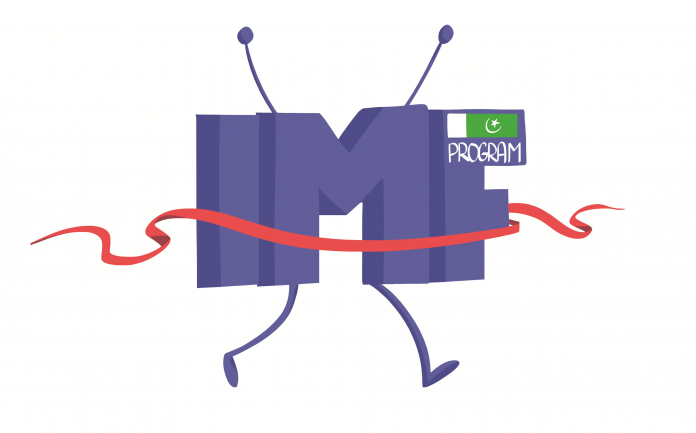
The international lender advises caution so as not to lose this current advantage
By: Ghulam Abbas
Despite negative perceptions regarding International Monetary Fund (IMF) Pakistan has a long history with the international lender that began in the 1980s. All the facilities that Pakistan signed with the IMF were generally aimed at closing the gap between revenue and expenditure in order to prevent the deficit getting out of control and raise the level of foreign exchange reserves.
However, unlike the last IMF program (a $ 6.4 billion Extended Fund Facility) Pakistan successfully completed in September 2016, almost all others facilities extended to the country had ended in failure.
Islamabad was forced to yet again knock on the IMF’s door in 2013, due to distressing balance of payment position, steep devaluation of the national currency and there was the increasing likelihood of defaulting on our loan payments.
The 2008 program failed due to the global recession. Pakistan had failed to obtain all the tranches of the agreed amount as it failed to meet the stringent requirements of structural reforms that the IMF had placed on the country.
“The successful completion of the last review is indicative of government’s strong commitment in implementing difficult structural reforms in the areas of taxation, energy, monetary and financial sectors and public sector enterprises,” Finance Minister Ishaq Dar after formal announcement of the closure of the loan arrangement.
“Macroeconomic resilience was strengthened during the three-year EFF-supported program completed in September 2016: growth increased, the fiscal deficit was reduced, and foreign currency reserves recovered,” recently released report of IMF said.
According to it, structural reforms were set in motion; long-standing fiscal and energy sector constraints started to be tackled, and social safety nets were strengthened.
However, at the same time resident representative of IMF to Pakistan Tokhir Mirzoev has recently cautioned Pakistan to avoid any situation undermining the hard-earned macroeconomic stability through the EFF. “The moment of opportunity earned through the stabilization program is a hard-earned opportunity to advance deeper structural transformation of the economy to ensure future stability,” Mirzoev said.

Besides, Moody’s, a globally recognized credit rating agency, has recently claimed that Pakistani economy has strengthened following the completion of a three-year bailout program of IMF. However the agency says Pakistan’s general debt level, as gauged by the debt-to-GDP ratio, is not up to its standards, the agency stressed, adding that it came in at 67% against the 50% benchmark.
According to experts the state of the economy, however, may not have much to do with the program. There is, in fact, a strong expectation that Pakistan may again seek help from the IMF if its finances become insufficient to meet its external trade and debt repayment needs. The whopping external debt and ballooning trade deficit may force Pakistan to go for another tougher loaning program of IMF.
9. Acquisition of Pakistani companies

A sign of growing interest of multinationals in Pakistan
By: Farooq Baloch
Foreign investors have long shied away from setting up companies in Pakistan because of the poor law and order situation, persistent threat of terrorism, chronic energy shortage, decaying infrastructure, and a fragile democracy that plagued the country for most of the past decade.
There is still a long way to go before we are able fix this decades-long mess, but some recent developments point towards a wind of change. Starting from service oriented companies, such as EatOye, acquired in 2015 by Germany’s Rocket Internet, foreign investors are now moving into core market segments: consumer products, energy and automobiles to name a few.
Dutch dairy giant bought 51 percent stake in Engro Foods for $545 million last year followed by Turkish home appliances maker Arcelik AS, which acquired Pakistan’s Dawlance for $243 million.
“Pakistan has turned the tide,” Mattias Martinsson, the Stockholm-based chief investment officer at Tundra Fonder AB told Bloomberg in November 2016 – the company’s investment in Pakistan stocks at the time was $160 million.
According to Bloomberg, Merger and Acquisition (M&A) transactions in Pakistan surpassed $4 billion in 2016, its highest level in the last 13 years. Besides a crackdown against militants, the financial news service says it is “China’s vote of confidence in the country that has boosted investor confidence” – Beijing has pledged $59 billion (revised estimate) in loans and investment to build China Pakistan Economic Corridor (CPEC), which is part of its One Belt One Road initiative.
“We all know China does not take short term decisions,” Bloomberg quoted Martinsson as saying – and the Asian economic power hub has already showed her intentions. Earlier this year, the Chinese state-owned energy giant Shanghai Electric announced it would acquire K-Electric for $1.77 billion.
However, the investors are not only relying on acquisitions alone as is evident from the investment proposals Board of Investment has received from various automakers willing to enter Pakistani market through direct investment or joint ventures with local conglomerates.
Following the much-awaited, Auto Industry Development Policy, French carmaker Renault announced its plan to invest $100 million in Ghandhara Nissan plant. Shortly after, Hyundai and Kia, the Korean car makers, made the headlines for a comeback through joint ventures with Nishat Group and Younus Brothers respectively. According to BoI, the German auto giant, Audi has also sent proposal for setting up a manufacturing plant in Pakistan. Each of these new plants, according to BoI, will require up to $500 million in investment.
“Pakistan is on the verge of an investment-led growth cycle,” Arcelik’s Chief Financial Officer Polat Sen told Bloomberg following their acquisition of Dawlance. “Its young population, increasingly growing economy, makes it an enticing prospect as a market in the region”.
10. Improved sovereign ratings
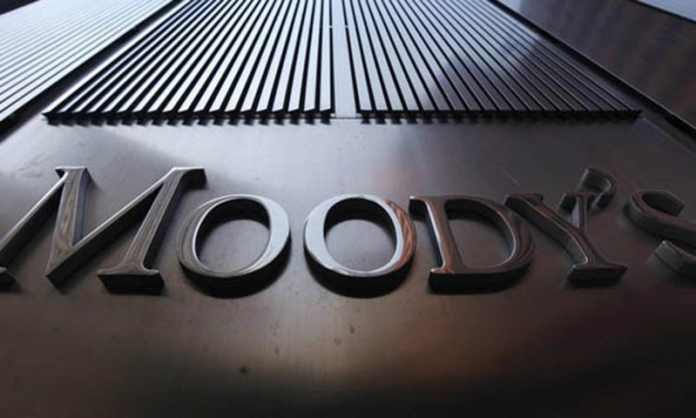
A hard-earned accolade that is even harder to maintain
By: Farooq Baloch
Last October, Standard & Poor’s upgraded Pakistan’s sovereign ratings from B- to B, giving it a stable economic outlook. The upgrade came seven years after the New York-based financial services company had changed the country’ credit rating from CCC+ to B- in August 2009.
The S&P’s rating further strengthened Islamabad’s creditworthiness in international market because it followed a similar forecast by Moody’s Investors Service, a leading credit ratings agency, which had upgraded the country’s rating from Caa1 – the status it had retained since July 2013 – to B3 in June 2015 and that, too, with a stable outlook.
Improved ratings after a gap of two years or seven years sounds impressive but why care about credit ratings from Moody’s and S&P in the first place?
Ratings, which include current rating and a future outlook, try to quantify in a standardized fashion the issuing country’s payback ability in the international bond market from where it can borrow money. They are based on solvency ratios, such as debt-to-GDP, debt-to-exports as well as liquidity indicators, such as dollar reserves and current account deficit. A good rating, therefore, can get Pakistan a fair price (interest to be paid on loans) when issuing sovereign bonds.
For example, Pakistan raised $2 billion by issuing five- and 10-year Euro Bonds in 2014 at 7.25 percent and 8.25 percent respectively. The rates were 558 and 556 (respectively) basis points above the benchmark U.S. Treasury rates – the difference is the premium Pakistan had to pay to compensate for the risk investors were willing to take while buying Pakistani bonds. Simply put, a good rating by these agencies can reduce the premium, making loans cheaper for the country.
The issue was oversubscribed reflecting investors’ confidence in Pakistan’s economy, analysts at the time said – and that was well before the two leading financial services agencies upgraded Pakistan’s credit ratings.
Given the country was on the verge of default when the incumbent took charge at the center, these ratings were hard-earned. Increased macroeconomic stability, improved domestic stability, better policy making, and a successful graduation from the International Monetary Fund (IMF)’s loan program were key reasons for the upgrade.
Being a country, whose economic outlook remained negative for a good part of 90s and 2000s, Pakistan did well to earn these ratings, but she will have to do even better to retain them and eventually improve further. As political tensions rise in Islamabad, following the ouster of Premier Sharif, analysts warn of a possible downgrade.
“If political tensions do not ease, we may see a downward revision of Pakistan’s rating in the next review,” says Adnan Sami Sheikh, an analyst at Topline Securities.
As we type this report Moody’s has already cautioned the country about the risks associated with its economy. Domestic politics and geopolitical risk continue to represent a significant constraint on the rating, Moody’s said in its July-2017 report. “The government’s debt burden is high and fiscal deficits remain relatively wide, driven by a narrow revenue base that also restricts development spending. Additionally, foreign exchange reserve adequacy, albeit stronger than a few years ago, would still be vulnerable to any significant increase in imports,” it added.
That being said, Moody’s Investors Service affirmed the B3 issuer ratings for Pakistan and maintained a stable outlook, saying the country’s medium-term growth outlook is strong.
“Our country’s dynamics are such that it almost always has political uncertainty,” says Zeeshan Afzal, who is Director Research at Insight Securities. “I would rather worry about falling foreign exchange reserves,” he said adding the government has to keep forex reserves high and for that it will have to take more loans.
11. Rise of national companies

The real growth drivers in Pakistan’s economic future
By: Farooq Baloch
When people go to a DHL office and say ‘I want to TCS a document’ that speaks volumes about how popular the local brand has become.
Tranzum Companies and Services (TCS) accounts for more than 60 percent of the country’s $300 million courier express and parcel market, which also has a presence of multinational giants, the likes of DHL and FedEx (now merged with Muller and Phipps).
The local courier giant is a good example of the rise of national brands that have been a driving force behind the country’s otherwise troubled economy — and their job is not over yet.
“If Pakistan has to grow, it will not happen with Pepsis and Wal-Marts of the world,” Parimal Merchant, Director of Global Family Managed Business Program at S P Jain School of Global Management, said during a workshop at the Institute of Business Administration, Karachi.
A staunch proponent of national brands and family businesses, Merchant advised a group of local journalists to shift focus from multinational companies (MNCs) to national brands, which he said would craft Pakistan’s growth story.
Merchant’s optimism regarding national companies doesn’t come without a basis: the Pakistani-owned companies have been driving much of the private sector’s growth for past many years.
Pakistani brands, which constituted nearly half of the top 100 tax-paying companies in fiscal year 2012-2013, paid Rs158 billion to the national exchequer, according to details of Taxpayers’ Privilege and Honour Card Scheme. This was more than twice the amount (Rs66 billion) paid by MNCs that constituted 54 percent of companies in the list — courtesy the top eight, which were Pakistani brands.
The aforesaid data, which the government hasn’t updated since then, highlights only one year performance of the local brands, but experts believe in the face of a chronic energy shortage, political instability and terrorism, these companies have shown a great deal of resilience to achieve all this growth.

In the last decade, Pakistan has seen a sizeable increase in the number of unlisted companies, which has fueled the growth of Pakistan’s private sector, Institute of Chartered Accountants of Pakistan (ICAP)’s flagship publication, The Pakistan Accountant said in its July-September (2015) issue.
ICAP didn’t name these companies, but market research suggests names like Tapal, English Biscuits Manufacturers, Imtiaz Super Market, Shaan Foods, Qmobile, Khaadi, and Gourmet Pakistan to name but a few, have grown significantly and many of them outperformed their multinational counterparts: Tapal became the largest selling tea brand, surpassing Unilever’s Lipton while EBM outperformed Mondelez’s local partner Continental Biscuits, controlling nearly half the branded biscuit market and ISM has more than 20 percent share in every fast moving consumer goods category in Karachi, much ahead of Germany’s Metro and Carrefour’s retail franchise, Hyperstar.
Experts say the $300 billion economy has to grow at a minimum of 7 percent annually to absorb over 3 million people entering the job market every year. And for that to happen, the real push has to come from the private sector, which mainly relies on local brands — and if a global forecast by McKinsey, a leading research and consultancy firm, is any indication, that time is not far when many local brands will become large companies.
According to McKinsey, 7,000 companies could reach $1 billion revenue size by 2025 and 70 percent of them will most likely come from emerging markets, which Pakistan is now a part of.
12. Increased consumer spending

The rise of the Pakistani middle class
By: Aisha Arshad
Hafsa Siddiqi starts her day at 7 a.m. The former journalist, who is now a senior lecturer at a private university, heads to work straight after breakfast with her husband, also a journalist associated with a renowned English daily. The two meet briefly over afternoon tea when she is back home and her husband leaves for work — only to return at midnight when Siddiqi has slept already.
This has been the couple’s routine for over a year now and Siddiqi, who has been with the university for two and a half years, admits it’s a tough routine. But, in the next breath, she acknowledges it would be nearly impossible to buy a decent house if one of them wasn’t working: the couple has just moved to their dream house in Gulistan e Jauhar’s Block 13, one of the most sought-after neighborhoods for middle income families that provides a range of new and upcoming projects.
Owning an apartment, financed in part by an HBFC loan, is a major milestone for the family and comes a year after they had bought a brand new Suzuki Mehran, that too through bank lease — the couple is a typical representation of one of the most important socio-economic group driving the country’s $300 billion economy: they are the face of the country’s growing middle class, which is among the top five in the Asia Pacific region as per statistics of Asian Development Bank.
“Paying Rs50,000/month as an installment for our home and another Rs14,000 for the car wouldn’t be possible if the both were not working,” says Siddiqi whose family income far exceeds $1,000 per month.
Defined as households with daily per capita expenditures of up to $10, Pakistan’s middle class has soared in recent years.
According to an unpublished study conducted in 2016 by research firm Aftab Associates, 38 percent of Pakistan’s population is middle class while a further 4 percent is upper class, Wall Street Journal said in report earlier this year. “That’s a combined 84 million people roughly equivalent to the entire populations of Germany or Turkey,” it said quoting the study, which measured living standards in the country.
This income group has been an active contributor to the country’s economy over the past few years, for it dines-out at least three to four times a month, often watches movies in cinemas, goes on a vacation once every few years, spends on large household items like electronics, furniture etc. occasionally and a large sum of their household income is spent on groceries twice a month. More importantly, it even consumes its future incomes, paying monthly bank installments for cars and homes bought on lease or mortgage. The socio-economic changes that broadly explain the emergence of the middle class are rising incomes, urbanization and white-collar occupations, fuelling demand for consumer products and services as well as recreation and tourism.
The socio-economic changes that broadly explain the emergence of the middle class are rising incomes, urbanization and white-collar occupations, fuelling demand for consumer products and services as well as recreation and tourism.
For example, Siddiqi’s brother in law, a banker by profession, and his wife, a school teacher, chose to celebrate their son’s last two birthdays at Port Grand, a high-end food street in Karachi and Kababjees, a lucrative chain of restaurants respectively.
In the domino effect, real aggregate national consumption has increased to about $60 billion, of which the middle class consumption was $55 billion. This meant that during this decade 90 percent of the increase in national consumption came from the increase in consumption of the middle class.
Siddiqi and her husband are an exception when it comes to frequent recreation because of the mismatch of their work hours, but the couple spends weekends visiting relatives and watching movies. When both of them are at home, they often order food online — a growing market segment that surpassed $15 milion in turnover last year.
13. More foreigners seen on Pakistan-bound flights
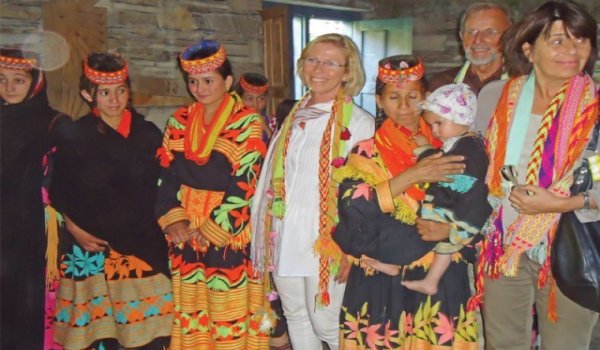
Always a good sign
By: Farooq Baloch
“When you see more westerners on Pakistan-bound flights, it is a good sign for the country,” Florida Today’s Executive Editor Bob Gabordi said to Profit’s Karachi staff at the Center of Excellence in Journalism during a meeting in May 2016.
The American journalist who visited the country after a gap of few years noted there were more foreigners (especially white caucasians) on the flight to Pakistan than his last visit.
Gabordi is one of the many foreigners who have visited Pakistan in recent years in one capacity or the other. The list includes journalists, businessmen, tourists and diplomats who were once advised not to visit the country on account of security concerns.
Jose Vinals, Group CEO Standard Chartered Plc.; Jon Fredrik Baksaas, former head of Telenor Group (Global); Paul Polman, CEO Unilever; Ian Buchan, regional head of Mondelez International; Eric Schmidt, Google’s former chief are some of the prominent business leaders globally who have visited Pakistan in recent years.
“We have been here since 1948 and we are here for the long haul. We know that the future is bright but challenging,” Polman said in his 2010 visit to the country — the Pakistani arm of the Anglo-Dutch consumer goods and foods giant doubled its size in the last four years, its global chief at the time.
Besides businessmen, many tourists and diplomats have also talked about challenges facing the country and opportunities it has to offer.
“Does a person lose value if his arm has cancer? No. You rid the body of cancer and rehabilitate. So, too, a nation,” former Goodwill Ambassador to Pakistan, Cynthia D. Ritchie said of Pakistan’s security situation in a tweet last August, shortly after after completing her visit to the country.
Ritchie took to twitter and shared her experiences thorugh a Q&A. Though there are some challenging issues, but talented youth are the hope for the future, she said. Ritchie was all praises for the beauty of Pakistan’s northern areas, a central attraction for international visitors, especially hikers who love to scale some of the world’s tallest and most difficult peaks, such as Nanga Parbat (also known as killer mountain) present in the area. The country’s peaks continue to attract hikers despite the 2013 massacre of 10 people at the Nanga Parbat’s base camp.
Pakistan’s military has done well to break the back of terrorists that once wreaked havoc on the country, but their job may have only begun: despite an improved security environment, the game of cricket, which as banned in the country following an attack on Sri Lankan cricket team, has yet to return home.
14. Youth of the nation
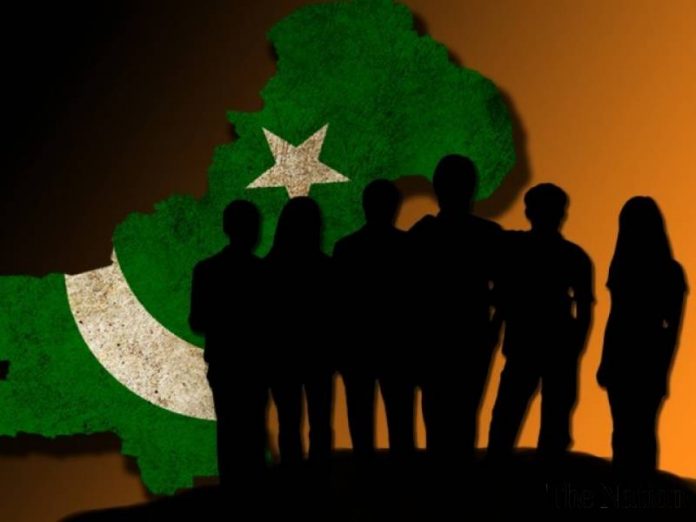
Makes up a large chunk of the population and they want jobs
By: Aisha Arshad
Benjamin Desraeli once said, “Almost everything that is great, has been done by the youth.”
If provided ample opportunities and guidance to the right direction, Pakistan’s youth that is now 66 percent of the total 200 million population can do almost great things for the country’s upcoming economic phase.
According to Islamabad Policy Research institute, Pakistan has the second highest percentage of youth population in the world with a literacy rate of 79.1 percent for males and 61.5 percent for females – that makes it a force to be reckoned with.
However, the force needs to be unleashed and turned into an asset for the country. As a beginning step, employment opportunities have to be created for the 250,000 youths who graduate every year but have to compete fiercely to get one of the measly 50,000 jobs that are available to them every year ; a number that is too low to meet the large number of talented young people.
According to the Next Generation Report, Pakistan will need 36 million more jobs in the next 10 years with our population increasing by 44 percent over the period.
Unfortunately the reality is that jobs cannot be created within the existing demographics and they can only be generated by expanding the ecosystem that is able to accommodate this growing youth.
Employment opportunities can be made better through promotion of low, medium and high tech businesses; engaging youth via partnerships and developing youth led corporate sector and promotion of the entrepreneurial activities is also essential.
15. There may be hope yet for Foreign Direct Investment

CPEC and interest from foreign firms should provide much needed FDI
By: Arshad Hussain
The Future of Foreign Direct Investment (FDI) in Pakistan has become brighter because of the China Pakistan Economic Corridor (CPEC) as some Chinese Companies have already signed around $55 billion investment deals with their Pakistanis counterparts including provincial governments.
The Chinese firms have so far invested approximately $1.2 billion in the last fiscal year in power plants and road links etc due to which the FDI has gone up by 4.6 per cent up to $2.410 billion. In June 2017, the country received an amount of $199 million in the head of direct investment.
Oil and Gas, Power sectors, Construction and food industries are the main sectors that are being supported by foreign companies.
The newly appointed governor of the State Bank of Pakistan (SBP), Tariq Bajwa said, “the foreign investment will start pouring in the country in the coming months as the international investors are looking towards Pakistan because of improving law and order situation.” The rising FDI will also support the local reserves position and retiring the foreign debt, he added.
Pakistan needs investment in the country through joint ventures in Auto Industry, Oil and Gas, Food Sectors and others and in this connection, few foreign auto companies are in negotiation with local institutions for their investment in Pakistan. Meanwhile some local vendors like Suzuki Car are also ready to expand their existing businesses here.
Pakistan needs to complement this urbanisation-induced market-seeking FDI with efficiency-seeking investment. This can be achieved through joint ventures or technical collaborations between foreign and local companies in the form of parent-affiliate arrangement.

According to analysts, “Pakistan’s technological base can only improve through this arrangement. “Research has shown that whenever FDI comes outside of this parent-affiliate relationship, the process of technology transfer is minimal.”
In the past, Pakistan has received FDI of this sort. Mobilink, which can be considered a pioneer in Pakistan’s mobile telephone industry, started as a joint venture between Saif Group, a Pakistani conglomerate, and Motorola Inc. Pakistan’s telecommunication sector can be considered to be technologically at par with telecommunication sectors in other emerging economies.
Joint ventures and other such collaborations can only be considered a viable option by foreign investors if they are sure that business contracts are upheld, their intellectual property rights are not infringed upon and their profits are not eaten away by high tax rates. These can be considered as soft business infrastructure.
Currently, Pakistan’s performance in soft business infrastructure is very dismal. Improvement in this area can truly turn Pakistan into a cheap input option for foreign investors and promote efficiency-seeking FDI.
16. Growing startup culture and the next generation of entrepreneurs
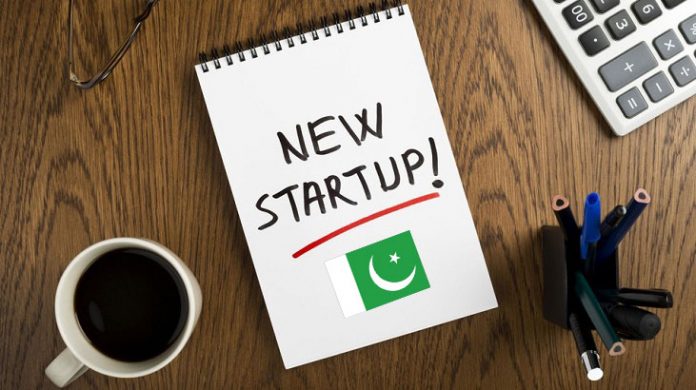
Providing much needed support to the economy
By: Aisha Arshad
In the last few years – especially after the rise in 3g and 4g user-base – Pakistan has seen a tremendous rise in tech startups and social enterprises; both of them helping the economy in terms of creating employment opportunity, tax returns and capital.
Pakistan is an agro based country. However when it comes to urban professions it has an inclination towards entrepreneurship since the very beginning. According to SMEDA’s (Small and Medium Enterprises Development Authority) statistics small and medium enterprises constitute 99% of economic establishments in Pakistan. These are often set up by individuals or groups of entrepreneurs. These businesses contribute 40% to the GDP and 30% to exports from the manufacturing sector.
However, small businesses and enterprises come with an important distinction. SMEDA statistics mentioning the small businesses are the traditional businesses. The enterprises that are gaining traction in Pakistan today are innovation driven enterprises (IDEs), more commonly known as startups.
Innovative business ideas have entered the non-tech business world as well. Among these are social enterprises as well and they are gaining popularity. These enterprises focuses on eradicating the problems caused by poverty and a lack of common amenities and resources. Pakistan has a surplus of human resources when it comes to Tech startups in the form of a huge crop of engineers. The remarkable feature of it is its requirement of very low capital investment. A laptop and a mobile phone usually does the trick in creating and marketing the products worldwide
Pakistan has a surplus of human resources when it comes to Tech startups in the form of a huge crop of engineers. The remarkable feature of it is its requirement of very low capital investment. A laptop and a mobile phone usually does the trick in creating and marketing the products worldwide
Entrepreneurship is also becoming popular among the young graduates. They are focusing more on the creating jobs rather than hunting them.
To encourage these entrepreneurial minds, universities themselves have started their own incubator/entrepreneurship centres or arrange conferences and seminars to encourage and facilitate their students. There are at least 25 to 30 running projects (businesses) in each of the Pakistani universities that have some form of incubation (this includes IBA, LUMS and NUST among others).
17. Women participation in the workforce

A necessary inclusion in today’s world
By: Aisha Arshad
When it comes to the workforce, in Pakistan it is heavily dominant with men. Traditionally women were expected to look after the house and children. However with the increasing literacy rate of women it has empowered them to contribute to the economy of Pakistan Women make up about 48 % of total of population of Pakistan. Even the 22% that are working — which is low as per international standard — women are still able to contribute to the GDP heavily.
In large part, this is due to considerably higher labour force participation rates by women, which have risen from 16% to 24% during the past decade and a half, according to data from the Pakistan Labour Force Survey.
Government machinery, non‐governmental organizations and progressive political parties should focus on the education of women if they want to enhance the status of women in Pakistan by implementing special schemes and programs for absorbing them into different occupations, particularly in organized sector so as to improve their structures of employment as well as status of jobs.
 Many businesses are now providing the ease to work from home for women who are not able to keep strict office hours due to various restraints ranging for scheduling conflicts to cultural taboos that disallow it. This provided a unique opportunity for women to be part of the workforce and contribute to the GDP.
Many businesses are now providing the ease to work from home for women who are not able to keep strict office hours due to various restraints ranging for scheduling conflicts to cultural taboos that disallow it. This provided a unique opportunity for women to be part of the workforce and contribute to the GDP.
18. Rising local tourism
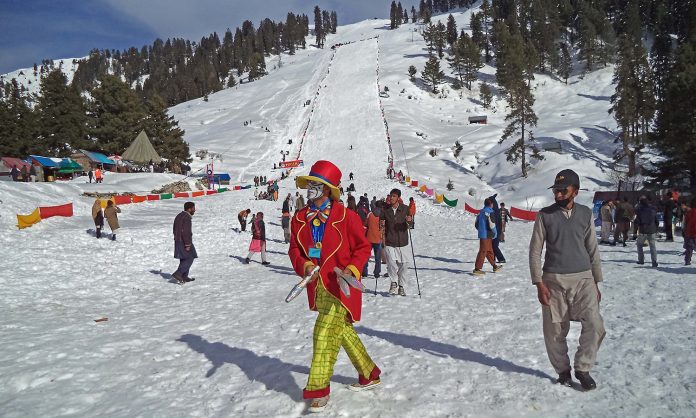
Resulting in greater economic activity
By: Farooq Baloch
It is a sunny June morning and Muhammad Qasim waits outside Afaq Hotel in Naran, a small town in the scenic Kaghan Valley of northern Pakistan, as his guests, a Karachi-based family, get ready for a trip to Lake Saif-ul-Malook, the most visited tourist attraction in the valley.
“We have to leave early and return early to avoid heavy traffic or we will be stuck,” Qasim tells the guests as they set off, referring to the influx of tourists who will start visiting Naran from this day onward – the town also serves as shorter and faster route to another tourist attraction Gilgit Baltistan compared to the old one via Mansehra. After racing through the metro area, they join a narrow unpaved, unprotected path only Jeeps could climb. For the next 45 minutes, he snakes around mountains, squeezing past a snow wall on both side and wading through glacial waters, to reach the top where hundreds of tourists are already enjoying breathtaking views of the area often touted as Pakistan’s equivalent of Switzerland.
After racing through the metro area, they join a narrow unpaved, unprotected path only Jeeps could climb. For the next 45 minutes, he snakes around mountains, squeezing past a snow wall on both side and wading through glacial waters, to reach the top where hundreds of tourists are already enjoying breathtaking views of the area often touted as Pakistan’s equivalent of Switzerland.
The local jeep driver hardly responded to his guests’ queries during the ride – had he lost attention or control of the jeep, the vehicle could have descended thousands of feet down, from an altitude 11 times higher than Bahria Icon Tower, the tallest (286 meters) building in Pakistan. That dangerous ride ending up in the picturesque Lake Saif-ul-Malook surrounded by glaciers is an experience of a lifetime and Pakistanis are exploring it in droves.
“Number of visitors to Naran has nearly doubled during last three to four years,” Manager of Afaq Hotel Muhammad Adeel tells Profit at the end of a hectic day. The hotel is fully occupied and he politely denies a group of men looking for a room — that explains why the number of hotels has gone up from 70 three years ago to 120 now, not counting scores of under construction buildings throughout Naran city and its outskirts.

It is hard to find official data about the number of visitors touring the place, but Pakistan Tourism Development Corporation expects up to 60,000 people to visit the countryside this summer.
The numbers of visitors to northern areas are increasing every year and so are opportunities. A room that costs Rs5,500 off season, will now sell for double that price, Adeel says and it is only day one or start of the season. The next morning, Naran is overcrowded: outdoor camps filled to capacity, roads covered with a sea of heads, bumper-to-bumper traffic, often turning into gridlocks, making one wonder if PTDC’s expectations were a gross underestimate.
By exploring the natural beauty of their country, visitors are rediscovering their love for the country – and in doing so, they have created a whole new economy for their hosts.
“Business is increasing by up to 15 percent every year,” Adeel says of the hospitality industry of Naran that keeps on hiring. Dozens of new tourism agencies have opened up, employing hundreds of people, restaurants remain open late night, while Jeep drivers like Qasim remain busy throughout the summer and so are vendors selling Trout, fruits, beverages and what not.
The tourism fever, which started from KP and GB and mostly remained limited to the middle and upper income class, has now gripped the whole nation: from salt mines in Khewra (Punjab), to exotic beaches of Kund Malir (Balochistan) and hill station of Gorakh Hill (Sindh), citizens are exploring the length and breadth of their country. Foreigner may take a while to return, but tourism is back already.
“In few years, I see business expanding to places like Babusar Top,” Adeel says. “Once undiscovered by large swathe of tourists, these places now have hotels and restaurants,” he adds.
19. Urban development
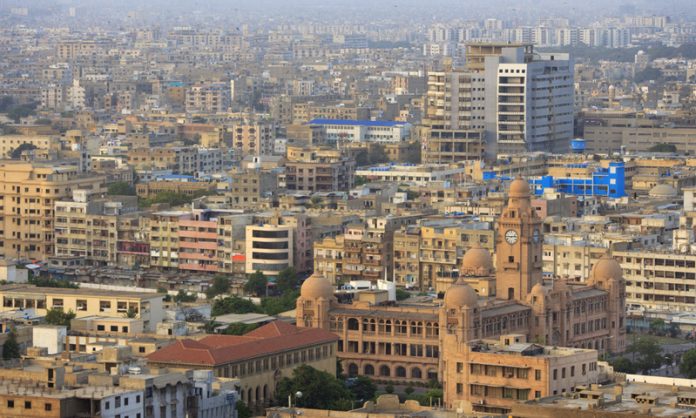
And the expanding transit system that will support it
By: Muzhira Amin
Mohammad Ali, a sixty year old gatekeeper of an apartment near Saddar first came to Karachi when he was in his early twenties. “Back then you were supposed to be lucky if you came to the city. I was the only boy in our family who got a chance.” Today five of his sons are blue collar employees, situated in the city with their families.
According to a research by worldometer, the population of Pakistan to-date is 196,974,178 based on United Nations estimates. 39.2% of the population is urban, that is that 77,107,125 people are situated in urban centers of the country, as of 2017 and this number is increasing each year. With almost 40% of the population moving to urban areas every year, the development of these areas is imperative.

Significant infrastructure development is needed to cater to this migration from rural areas to urban and most of the development is being in the transportation sector.
The entire city of Karachi seems to be in a phase of development after the announcement of the Green Line Project by former Prime Minister Nawaz Sharif, in 2016. Karachi Metro Bus will consist of five corridors and will have total length of about 109 kilometers (68 mi), of which the Green and Red Lines have gone into construction.
Not only Karachi, the Bus Rapid Transit Corridor project of Peshawar, similar to the metro bus projects of Lahore and Islamabad recently got approved. The project once completed is estimated to simplify the lives of about 500,000 people who commute through the service on regular basis.
Simultaneously, the first 27 trains designed for the Orange Line Metro Train in Lahore, have been delivered by a Chinese company to the Punjab Government in July this year.

With work on the go already in urban centers like Karachi and Multan, further projects are planned in Faisalabad, Peshawar and Quetta. This clearly shows that the seed of urban development has reached Pakistan; all we have to do is, wait for the fruits!
20. Sports goods industry based out of Sialkot
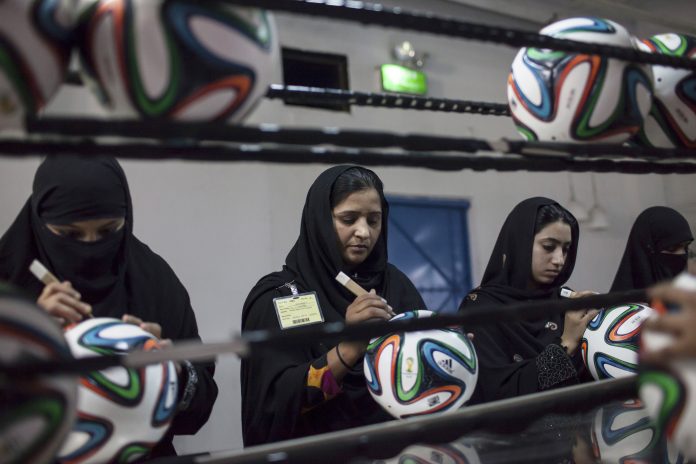
Making a comeback
By: Syeda Masooma
Pakistan is not particularly known as a footballing nation but its footballs sure have an international demand. The first time Pakistan supplied footballs for a FIFA World Cup was in the 1980s. At one point Sialkot’s exports of football neared as much as 85% of the global football demand. In FIFA World Cup 2010, played in South Africa, Pakistan exported 8.825 million footballs worth over Rs 2,171 million from Sialkot dry port.
That was the time when machine-made balls were being introduced in the international market which had severely affected the demand for Pakistani produce. From exporting 70% of the world demand amounting to approximately $210 million back then, Pakistan came down to only 30% of the total orders placed in 2010 year by FIFA World Cup.
In 2014, Pakistan supplied footballs for FIFA World Cup again. The situation improved for Pakistan and the total exports amounted to Rs 17,413 million for 42 million footballs. The tournament took place in Brazil and the footballs exported by Pakistan were called Brazuca which is an informal local term meaning Brazilian way of life.
According to latest reports, 2017 is likely to bring good news for the football manufacturing industry again. Not necessarily through the FIFA World Cup 2018 but through the industry relocation. Football business from China is diverting to Pakistan. An exporter, Safdar Sandal, while talking to media said that since labour is cheap in Pakistan, most Chinese companies were also considering diverting their business to Pakistan. He said that several Chinese companies have already developed trade contacts with Sialkot-based companies, and now that the FIFA World Cup is only a few months away, an increase is expected in football exports from Pakistan is expected once again which will be a welcome boost to our dwindling exports.
21. Making quality school education affordable
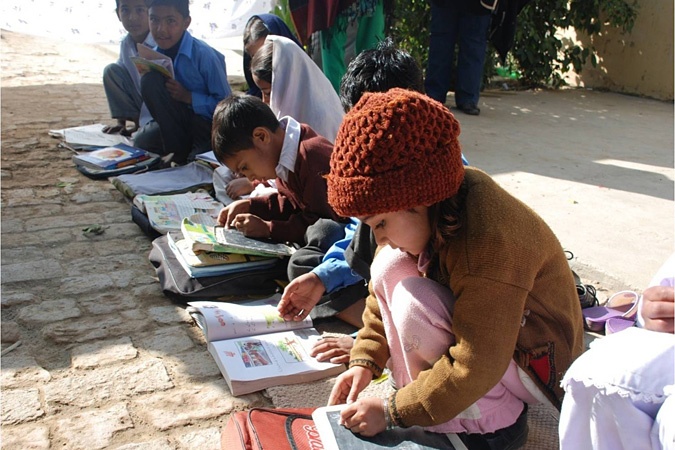
Towards a brighter, better informed and well educated Pakistan
By: Fatima Rehman
“My early morning begins with assemblies in school where we recite National Anthem together and my day ends at Abba’s barber shop”, Rahim Yaar, 15 year old student of Rabtt Fellowship Program told Profit.
With literacy rate of about 58%, Pakistan is privileged to have organizations such as Zindagi Trust, TCF (The Citizens Foundation), Rabtt and many more with a foresight for the future. Pakistan spends around Rs84 billion on education and 79.5 billion on Higher Education in the budget of 2016-17 which still seems less in comparison to the world. With government lacking resources, these NGOs have stepped in to fill the gap.
With 1,441 working school units TCF is one of the many non-profit organizations believing in spreading the light of education especially to those who cannot afford it.
With nominal tuition fees and quality education now even a poor farmer or a rickshaw driver finds it easier to send their children to school where they can bring life to their dreams. Fellowship programs like Rabtt also works on subjects like Public Speaking, philosophy, literature and Arts apart from the basic academic education.
TCF has now taken this step to take School education one step further by starting programs like ADP (Alumni development Program) where they prepare students for their university life ahead and assist them in choosing a professional career.
This eventually leads to a more educated and well informed Pakistan where the students do not stay deprived only because they cannot afford it.
Every year about 2500 students graduate from these schools and choose a profession for themselves. Meet Javeria Yousuf, a TCF Alumni who is determined to enlighten and empower her community in Minhala by returning to the school she graduated from. Passionate about Mathematics, Javaria brings the magic of numbers to her classroom at TCF’s Shirin Sultan Dossa Campus-3 in Minhala, 20 km away from Lahore.
While these private non-profits can spur one’s belief in this land by putting heed to education, a mammoth effort is required on part of the government at both the centre and provinces to take stock of the abysmal education situation in the country and make a conscious effort to fix it preferable starting with larger chunk of the budget being earmarked for low cost quality education.
22. Higher education 70 years on
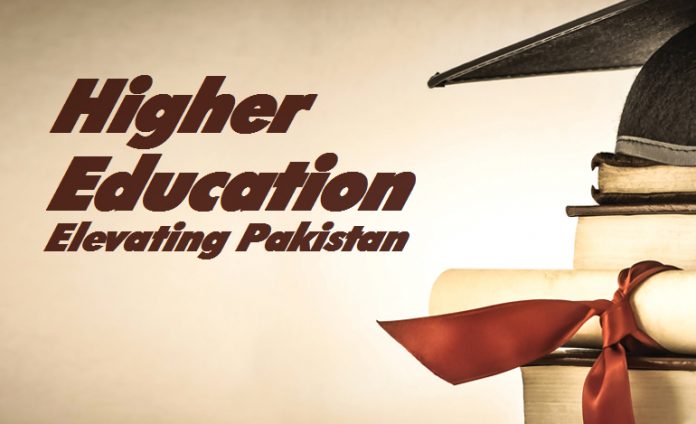
From just one University at the Partition, 175 universities – some of these with Asian and global ranking – is a source of pride and hope
By: Abdullah Niazi
In August 1947, there emerged from the blood, toil, ashes and sorrows of partition, Pakistan. A country hardly in incubation let alone out of it, this newly formed nation was full of homeless immigrants facing irreparable loss, poverty and an uncertain future.
At that time 70 years ago, there was just one educational institution with the status of a chartered university in the country, the Punjab University. There is normally a lot of ruckus about the state of education in the country. There are those that say the same thing every time an argument arises: Where is the government? Why do they do nothing for higher education? Have you seen the state of education in the country? We are producing robots not scholars.
What most people fail to mention, however, is how far Pakistan has come in the education sector over the past 70 years, especially in higher education. From the single university Pakistan had at the time of partition, the tally now is 175. Of these, 99 are public universities, with the other 76 private, with the total number of campuses (in addition to main campus/principal offices) being 82.
A number of universities regularly achieve rankings in the top 300 of Asia, top 500 in the world and even more in the world’s top 1,000 as per official rankings. In 2017, at least seven universities including NUST, COMSATS, Faislabad Agricultural University, Qauid e Azam University and the Lahore University of Management Sciences made it into the top 300 ranking of the Asian continent.
In the QS ranking, NUST has just this year reached the top 400 universities in the world, jumping more than 90 positions from its previous standing. It has also been ranked 61 in the prestigious “top 50 under 50 ranking.”
At this point in Pakistan, through a combined effort of both the government and private sector universities, some of these financed by philanthropic endeavours, the field is now more open than ever for Pakistani youth access to university education.
More importantly, universities such as LUMS, NUST, and PIEAS now have the highest number of foreign qualified PhD professors. What is even further indication of hope and progression is the fact that from these institutions arise merit scholars as well as a large number of doctorate students.
Let us give credit where due. Whether the growth has been spawned by the government or has come in spite of it; whether conscious of the importance of education parents have paid for their offspring through the skin of their teeth, it is still reflective of the national resolve to educate its youth. And while figures for out-of-school-children nationwide should really be a source of embarrassment and alarm, crying for national attention and action, the progress made in the last seven should similarly be a source of pride.
23. Pakistan Super League going from strength to strength
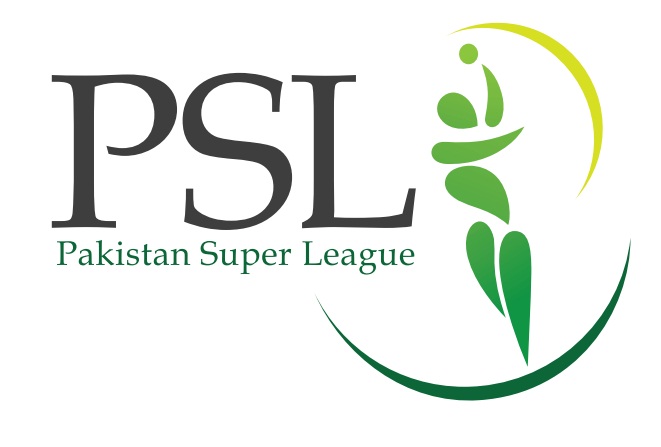
Pakistan plugs an embarrassing gap in its cricket calendar
By: Khawaja Manzar Amin
The maiden venture of Pakistan Super League (PSL) 2016 was really neither ‘Pakistan’, as it was played in our ‘home away from home’, the United Arab Emirates, nor was it suitable to be called ‘Super’, as most of the top international stars stayed away. At best it was a metaphorically cautious PCB testing the waters with a wary toe, with five franchises participating in the experiment. But despite these two factors, combined with the innate excitement of the Twenty20 genre and hordes of cricket-starved Pakistani fans, elicited a better than expected response from expatriates and the television viewing audience at home. Most importantly, Pakistan plugged an embarrassing gap in its cricket calendar, as the majority of the mainstream cricket playing countries had already showcased their international variation of Twenty20.
The PSL 2017 was an improvement as it attracted some world renowned cricketers, albeit in the same five franchises, but the real viva la difference was that the final was played on March 5, 2017 at the Gaddafi Stadium before a packed crowd, the event passed off without a tremor (if that is the correct word), the only hiccup being some mismanagement in easy availability of the lower priced tickets and of course, the extra-tight security that had to be grudgingly endured. The Army Chief’s shouldering of the security angle ensured smooth sailing of the event. Commercially it was a huge success, with 15 top of the line brand advertisers participating and millions of viewers watching on (for media channels) lucrative live streaming.
Commercially it was a huge success, with 15 top of the line brand advertisers participating and millions of viewers watching on (for media channels) lucrative live streaming.
But the negative publicity factor was the spot fixing scandal involving a few of our players, which was further exacerbated by some clumsy handling by Najam Sethi, the PSL head honcho. The cases are still being fought in full public spotlight, besmirching Pakistan and Pakistan Cricket for all the wrong reasons.
Now the 2018 version, which is on the drawing board, envisages six teams, with newcomer Multan, and more matches with a total of 34, of which eight are to be played in Pakistan. But as in the 2017 final, when some foreign players got cold feet when the match was shifted to Lahore, and one doesn’t really blame them, the fate of the eight will depend on the overall law and order prevailing in the country at the time.
Ideally, these cheerful and encouraging events should have been managed by retired professional cricketers in the PCB, duly elected in fair and transparent elections, instead of the novices and creatures of blatant patronage now at the helm, but one cannot, out of fairness, begrudge the latter basking in reflected glory. And the unbending condition here too is a comprehensive audit, by a firm of good standing and repute, of the accounts of both PSL 1 and 2, which has strangely or suspiciously been overlooked so far.
24. Strong/unfriendly opposition

Friendly opposition is no opposition
By: Khawaja Manzar Amin
Although post-Panama it was no longer the case, most of the five years of Asif Zardari’s presidency and the early years of Nawaz Sharif’s third term as prime minister were characterized by the so-called ‘friendly opposition’ phase, a somewhat loose and elastic arrangement which could suddenly break down in the heat of some personal rebuff or slight, real or imagined, felt by one or the other of the top party leaders.
Informally agreed upon by the PPP and the PML (N) in the aftermath of the stillborn Charter of Democracy and the generous National Reconciliation Order, it was intended to avoid the inimical and personal politics of the 1980s and 1990s with their always lurking fear of a total derailment of the democratic process.
However, in the hands of opportunist politicians with excess corruption baggage, the otherwise sound concept soon turned into a self-serving mantra of ‘you scratch my back, I scratch yours’: potentially damning court cases were put in limbo or ended under dubious circumstances, evidence of corrupt practices was erased, records vanished, and governance was mostly reduced to assisting each other in wiping out or neutralizing the skeletons lying in the closets of both the PPP and PML(N) leaderships.
It was a most satisfactory mutual pact or deal, but it prevented the protagonists from turning their ‘talents’ to tackle the enormous economic and social challenges faced by the country and the ordinary citizens. Between the over-friendly opposition and its opposite, street agitation or dharnas, there must be a middle way to debate contentious matters right there on the floor of the House.

A strong and alert opposition is the best check against any excesses of the party in power and oversight over its plans and policies by means of healthy and well-reasoned debates.
In the British House of Commons, the antagonists are literally arrayed against each on opposite sides of the chamber, and the party in opposition boasts of its own ‘shadow cabinet’ and ministers, ready to take over the reins in case the government fails to retain its majority, while the packed weekly ‘question hour’ pits the Prime Minister against the opposition leader in a frank, with fireworks, display of criticism and ripostes over government policies.
Unfortunately, in our political system, opportunistic wheeling-dealing has been transformed into a fine art, and underhand deals that provide relief to corrupt cronies and shady hangers-on are the norm. In this way, the very spirit and core of the democratic system are degraded, leaders renege on their electoral promises, and the trust of the electorate is lost.
25. Turning point for the future
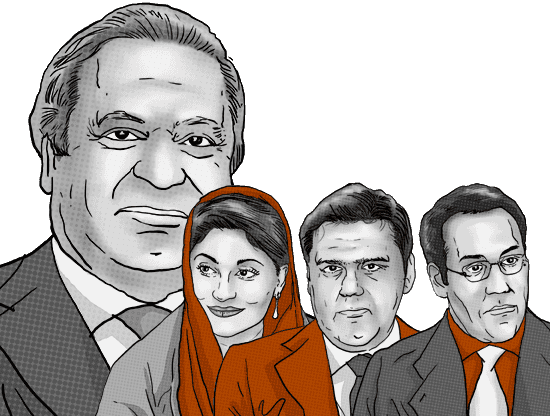
The Panama Leaks: The case is likely to spawn a foolproof system of accountability and fearless trial of lawbreakers, howsoever high their status
By Khawaja Manzar Amin
One the reasons for Plato’s disdain of ancient Greek democracy, which he likened to ‘mob rule’, and which probably holds true to a much greater degree today with the manifold increase in governmental functions, lay in his observation that a political leadership may in times of crisis and to save its own rule, prefer personal and party interests over the national interest. However, the master thinker could not come up with a better system, as his notions of the ‘philosopher king’, of either a king being trained to rule as a philosopher or a philosopher ascending the throne on that ground alone, seemed far-fetched even in his own time. There has only been one likeness to Plato’s ideal, in two and a half millennia, of a universally recognized philosopher king, the stoic Roman Emperor Marcus Aurelius, warrior and author of The Meditations of Marcus Aurelius. Gibbon wrote that the greatest good of the greatest number was the primary function of his rule, with few parallels in human history.
Nowadays, democracy has moved far beyond its original Greek roots and the notion of government ‘of the people, by the people, for the people’ romanticised by Abraham Lincoln and his contention that ‘you can fool some of the people all of the time, and all of the people some of the time, but you cannot fool all of the people all of the time’ cannot be said to hold true. Even in an advanced democracy like the US, millions of dollars are spent on elections sanctioned by law, or lobbied for from Big Business with a vested interest in the election outcome. As for fooling the people, that is now an easy task within reach of any ruler, by means of disinformation, outright lies and denials, deliberate leaks, intelligent use of the media and more recent, of the social media. It was said of Lincoln that he himself could never become president of the US today, because of his unfortunate habit of saying what was actually on his mind. However, the checks and balances spelled out in the Constitution protect the political system from extremist steps and policies and contain the basis of any correction within itself.
In our environment, however, where anarchy and chaos reign supreme in every sphere, accountability of any wrongdoing by a public office holder, especially belonging to the top echelon was not possible in a meaningful and effective manner. The convenient loopholes in the law, to be ably exploited by brilliant lawyers, the leaden-footed judicial system and procedures, connivance of the willing police, deliberate appointments of black sheep to key positions in the entire system, immense pressure and veiled or covert threats from the highest quarters were enough to stop even a strong willed do-gooder in his tracks in the past. However, the Panama leaks case, which unfortunately and sadly implicated the immediate family of the prime minister, and constituted a brutal betrayal of trust on the part of the elected representatives involved, will turn out to be the precedent and turning point for a future foolproof system of accountability and fearless trial of law-breakers, whatever their position. Those found guilty of malfeasance can no longer take refuge behind their high offices of state.
26. Religious tolerance

Small steps in the right direction: When Muslims create human chain to protect minorities
By: Fatima Rehman
It’s not only the flag where we accepted minorities by allocating them the white with the green, it’s in our cabinets, economy, film industry, sports, military and above all our hearts where we unite under one big name, “Pakistan”.
In no way do minorities lack when it comes to serving the country. Lal Chand Rebari, a resident of Muhammad Ismail Nautkani Village and a father of four small children earned the honour when he sacrificed his life in the line of duty. However, Lal Chand Rebari is not the only name that pops up when we talk about the undeniable patriotic spirits of our brothers from minorities.
“Dharti maa is what life means to us, This land only knows how to accept and its people know how to shower love, we bleed green, “ Hari Raam told Profit what Pakistan means to him who is a 78 years old long bearded man with an orange turban on his head is a Sikh by religion but a Pakistani at heart. He has been a caretaker at Rana Liaquat Government School in Rehri Goth for more than 40 years. Out of the 180 Million population of Pakistan there are about 1.4 million people from minorities who are CNIC holders. Some of the more noticeable names include Byram Dinshawji Avari who is the owner of Avari Companies, a prominent Pakistani Businessman and twice Asian Gold medalist.
Out of the 180 Million population of Pakistan there are about 1.4 million people from minorities who are CNIC holders. Some of the more noticeable names include Byram Dinshawji Avari who is the owner of Avari Companies, a prominent Pakistani Businessman and twice Asian Gold medalist.
Jamshed Kaikobad Ardeshir Marker who is a veteran Pakistani diplomat and is listed in Guinness World Record for being the ambassador for countries more than any other person.
Violence and intolerance against minorities is a problem that will remain so long as the extremist mindset exists in our society. But recent examples like muslims forming a human chain around christians during mass in Lahore or ex-PM Nawaz Sharif attending a Diwali event to promote brotherhood give us hope that by and large Pakistan wants to live in harmony with minorities.
Those few with an extremist mindset will only be defeated if we continue to provide a counter narrative to their poisonous rhetoric.
27. Karachi operation
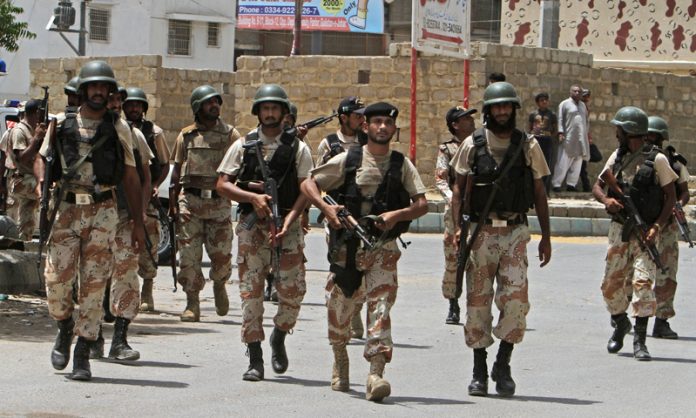
Improved law and order, rise in business and economic activities in the port city
By: Usman Hanif and Farooq Baloch
To protest against the extrajudicial killings of party workers, Karachi’s largest political party Muttahida Qaumi Movement (MQM), on September 12, 2015, called for a shutter down strike across Sindh. The next day’s headlines read something like that: MQM’s call for strike falls flat partial strike observed.
On the day of the strike, life was normal in Karachi, Hyderabad and Sukkur, that have long been MQM’s strongholds. This was in stark contrast to the response a similar call would have earned in 2013 or before: life in Pakistan’s largest city used to come to a screeching halt on the eve of an MQM strike, a full-fledged shutter down-wheel jam strike would follow the next day, such was its control over the city. But things changed as Rangers stepped in to do what Sindh Police had failed to. The paramilitary force launched a city-wide cleanup operation in October 2013, raiding MQM’s headquarter 18 months later and detaining dozens of worker including a senior member.
But things changed as Rangers stepped in to do what Sindh Police had failed to. The paramilitary force launched a city-wide cleanup operation in October 2013, raiding MQM’s headquarter 18 months later and detaining dozens of worker including a senior member.
Once the city’s most feared brute force, which flourished under the rule of former President General (R) Pervez Musharraf, MQM lost its grip on the city, the number of strikes that would paralyze business activities in the city dropped dramatically to nearly none now. The operation wasn’t limited to MQM, it even extended to Karachi’s most troubled neighbourhood, Lyari, which is stone’s throw away from the city’s business district, and brought end to a chronic gang war between two armed groups often involved in kidnaping for ransom cases, target killings and street crimes.
It pleased the traders and business community so much that they would issue press releases stating their satisfaction about changes the operation brought to the city — and numbers only agree with that.
Incidents of terrorism, Kidnapping for ransom and extortion, which were main concerns for businessmen, decreased sharply by 60, 57 and 34 percents respectively in 2016, according to statistics Sindh Police released on December 27, 2016. The city’s soaring property prices, which doubled as per some estimates since the operation cleanup began, are another reflection of an improved public and investor sentiment.
“The operation improved law and order situation of Karachi to significant extent resulting in restoration of confidence of the business community who were at the mercy of the law breakers and culprits,” says Gulzar Firoz, Incharge GSP Plus Desk in FPCCI, a national association of traders.
Business meetings related to Pakistan were held in Dubai, Malaysia and other neighbouring countries as foreigners did not want to come to the country let alone Karachi. The occupancy rate in the country’s big hotels had declined to 30 percent, but now it stands around 75 percent with foreigners often seen in their lobbies.

“Now we are enjoying the business as we have regained our occupancy rate to the extent that I am declining every client who insists on concession,” said Yasir Hamid Manager Sales and Marketing of Mehran Hotel.
Due to the improved situation people are flooding malls and shopping hubs in larger numbers which has taken the opportunity for businesses to next level. The rangers operation against criminals certainly changes things for the better, but the metropolis is still far from being a safe city, and security forces can’t afford to be complacent with their achievements so far, especially with a possible change in the government next year, which may result in change of policy.
The share of foreign tourists is only 7 to 8 percent which, according to market experts, needs to increase to at least 25 percent and business community still feels the criminals maybe hiding, but can come back if these efforts are stopped.
“All businessmen and traders would flee to Dubai and other places if the operations is stopped and things return to pre-operation state,” Imtiaz Hussain, owner Karachi’s largest chain of supermarkets, Imtiaz Super Market, told this correspondent in a past interview.
28. New entrants signaling major growth in automobile industry
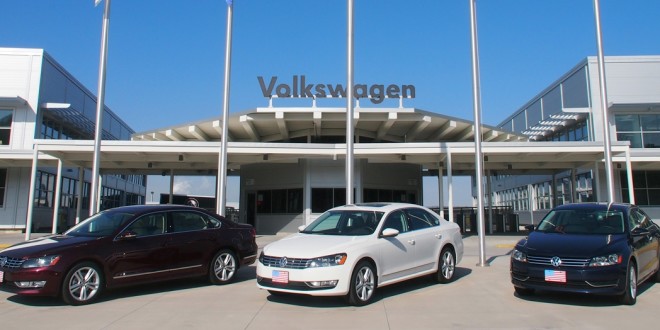
Volkswagen, Renault, KIA and Hyundai entering market on the cards
By: Arab Ibrahim
The automotive market is a huge and lucrative one worldwide. Automobile industries add substantially to the economy of a country. As an industry, it is one of the most important economic sectors of the world by revenue alone. The automobile industry in Pakistan, however, has consistently been a victim of laxity and has never been given its due importance.
Of the few revenue generating industries Pakistan has, automotives are one of the biggest.
Automobile manufacturing constitutes about 4.6% of Large Scale Manufacturing (LSM) -which is one of the pivotal sectors that gets an economy going.Despite this, it lags behind when compared with other developing countries.
In the year 2016, India produced five million units of vehicles; Mexico produced 3.6 million units, whereas Indonesia produced 1.7 million units of vehicles. In contrast Pakistan produced a meager 220,950 units.
The Pakistani market has a huge potential in the automotive sector as the country has one of the lowest per capita car ownership ratios in the developing world. While at the same time, the increasing purchasing power of the people due to better economic conditions in the country is driving a record number of vehicle sales.
The ever increasing demand for automobiles in Pakistan can be seen from the fact that the Honda Atlas Cars, which for some time struggled with its revenues, sold a record number of vehicles of its high end model, the Honda Civic. The company also posted a five year high profit despite repeated claims of quality issues. Moreover, with CPEC right around the corner, the sale of vehicles within and outside the country is sure to rise even more.
The Pakistani market has long been accused of being closed for all but the old Big Three, i.e. Toyota, Honda and Suzuki, which have dominated the market for nearly two decades. This comes even though ‘The big three’ have been accused of not implementing international safety standards and comfort in their vehicles. Moreover, Pakistan is one of the last places where the latest models of vehicles are launched, at times the lag lasting years. In a hopeful move, the incumbent government has taken special interest in the automotive manufacturing sector and announced the ‘Automotive Development Policy (2016-2021)’ which has been the most comprehensive policy in recent times.
In a hopeful move, the incumbent government has taken special interest in the automotive manufacturing sector and announced the ‘Automotive Development Policy (2016-2021)’ which has been the most comprehensive policy in recent times.
The main objectives of the policy are to facilitate the entry of new players into the market and rationalizing import policy, thus creating more competition for the big three and compelling them to adopt the latest global standards of safety and comfort.
After the announcement of the new policy a number of foreign companies have shown interest in Pakistan’s automobile sector. Giants the likes of Volkswagen, Renault, Kia and Hyundai partnering with local businesses and coming to Pakistan is on the cards.
The entry of new players to Pakistan’s automobile market is expected to bring billions of dollars’ worth of investment to the country and create thousands of new direct and indirect employment opportunities.
29. Returning Fullbright scholars determined to serve Pakistan
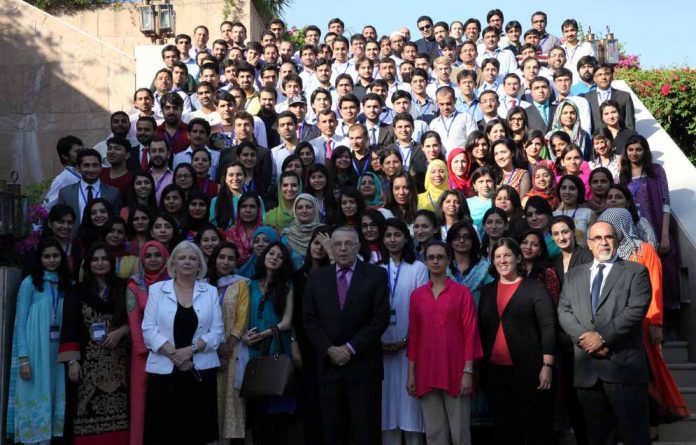
Giving back to the country
By: Fatima Rehman
What makes a nation strengthen its roots? Its own jewels returning back to the land and serving it with their expertise. Pakistan is among those fortunate nations where about 58% of the youth is literate, and can do wonders if utilized well.
Every year there is a significant amount of fulbrighters and scholars, who have had an extraordinary academic career, that return to Pakistan to try and bring about much needed change through their skills, western education and experience.
Nearly two-thirds of all fulbright scholars plan on returning back to their homeland so they may serve it to the best of their abilities. Organizations such as Ausaid, which is an Australian agency responsible for international development, provides young and deserving scholars and university students non military aid to live up to their dreams despite any financial barriers. Similarly Chevening works on polishing leadership skills among scholars and inculcates a sense of ownership and responsibility for their nation.
USAID provides $19.5 million per year for these scholarships. In 2017 alone, the USEFP hopes to award at least 150. Since 2005, Pakistan has had the largest Fulbright Program in the world. The previously mentioned Chevenings organisation recently sent 45 students from six different countries on cultural exchange program where most of the students were Pakistanis.
One of the many stars that made their way is Zia Hussain Shah, who is a postgraduate student from University Of Chicago and received a Fulbright scholarship for his commendable academic career. In the US Shah received much acclaim. Yousef Casewit, an assistant professor of Qur’anic studies at the University of Chicago, said “I had the pleasure of having him in my ‘Introduction to the Quran’ course last quarter and I was deeply impressed by his analytical, spoken, and written abilities, Zia Hussain is a gem.”

However, the 25 year old Shah did not stop there. He returned to Pakistan and co-founded an educational initiative named Ravvish, which focuses on teaching schoolchildren conflict resolution, and is showcased on the US State Department’s website. Ravvish and the likes of it are a step towards a literate Pakistan where finances will not be a barrier to education.
Moreover, Shah wants to transfer flagship to coming generations so that this flow of knowledge doesn’t go stagnant at any point.
Another prominent name is Shehzad Hameed, who is a fulbright alumnus making an important contribution to the ever-growing narrative on the depiction of Pakistani women in media. As stories of Muslim women continue to garner vast interest, both in the west and at home, he tries to portray the scuffle through which a woman has to go through in order to get to the place she deserves.
The return of fulbrighters is accompanied with the return of hope that spews and restores belief in youth of Pakistan. And it is through them that we can hope to achieve heights never seen before.
30. Increased connectivity spells employment and good business
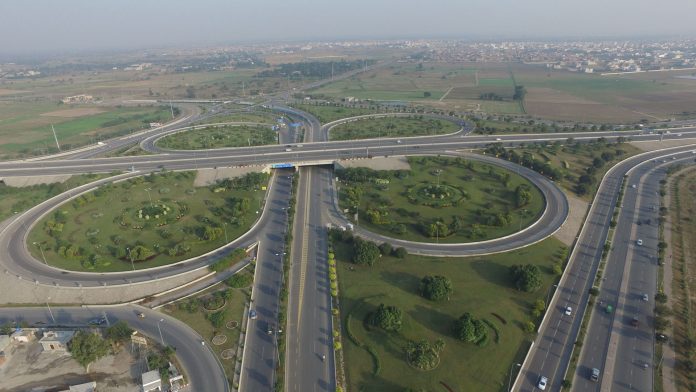
Motorways, highways doing better than ever before
By: Muzhira Amin
“I have been driving for the past 11 years, not only in Karachi but also in several parts of interior Sindh,” Shah Mahmood, a 30 year old rickshaw driver tells profit.
“I used to work at Al-Noor Sugar Mills and took my bosses on various business trips in Interior Sindh, especially in Hyderabad and Mooro. Before the development of roads took place it took me six hours to and from Karachi and Mooro. However, through the motorway, I can easily commute in three hours.”
Road connectivity has not only facilitated Shah Mahmood in travelling, but also contributed to the prosperity of Sultan’s business, a fishmonger centered in Karachi. “We can easily access fish coming from the Gwadar Port now, which has in return increased the volume of the fish,” he says.
Pakistan has embarked on a journey of the biggest road-building program in its history, with projects worth $11.15 billion in progress. Once completed, the length of the new motorways will reach up to 2000 kilometers. The National Highway Authority (NHA) is developing infrastructure projects through private sector on Build-Own-Operate (BOO) and Build-Operate-Transfer (BOT) basis. A 136 kilometer-long Karachi-Hyderabad motorway with 16 exits is being constructed with Rs 24 billion. The Sialkot-Lahore Motorway Project, Karachi-Hyderabad Motorway and Khanewal-Lahore Motorway will also be completed soon. Not only this, but more than 5,000 kilometers of rural roads have been constructed and refurbished on up-to-date lines at a cost of Rs 51 billion.
Among the under-construction projects, there are the 59 kilometer Burhan-Havelian Motorway also known as Hazara Motorway, 230 kilometer Lahore-Multan Motorway, section of Faisalabad-Multan Motorway, all of which are expected to be completed by the end of 2017.
The current national transport policy is aimed at cutting time and boosting the country’s economic stance, while simultaneously enhancing the country’s position as a trade and economic hub.
“First and foremost, the construction of motorways has improved access to the market i.e. communication between producers and consumers enriches. This in-turn leads to a decrease in the transport costs and an increase in sales. Moreover, economy tends to become geographically distributed, which balances it then,” says economist Muzzamil Aslam, weighing in on the subject.
However, as development has increased so have road accidents, especially on the motorways. Shah Mahmood said, “When you travel on these roads in private cars you tend to drive at the speed of 100 kilometers, but heavy vehicles travel at a speed of 45-50 kilometers. This generates a high probability of accidents.”
Furthermore, due to the political conditions of the country, with the Prime Minister disqualified, the sector has experienced a bearish trend. Yet despite all these setbacks, the nation feels connected like never before.
31. JF-17
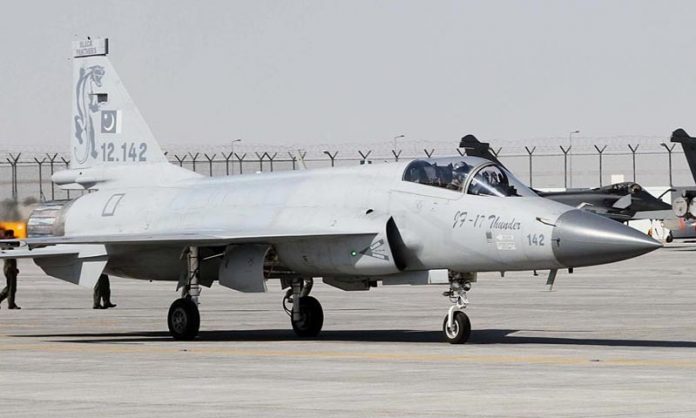
With some of the best air force pilots in the world
By: Agha Akbar
Pakistan is acknowledged to have some of the best-trained air force pilots in the world. In a joint venture with China, Pakistan attained an aeronautical landmark by producing the PAC JF-17 Thunder – short for “Joint Fighter-17”, it is a multi-role lightweight, single-engine, combat aircraft developed by the Pakistan Aeronautical Complex (PAC).
The JF-17 can be employed for aerial reconnaissance, ground attack and aircraft interception.
32. Ronaldinho and friends – bringing international sport back home

A major landmark in the history of Pakistani sports
By: Arbab Ibrahim
The history of football in Pakistan is as old as the country itself. Unfortunately, the sport has not been able to take flight like other sports such as Cricket and Hockey as it has faced negligence and politicking from successive governments.
While football in the recent years has emerged as a global sport, the Pakistan Football Federation has had limited success. The country could neither develop the infrastructure nor the expertise required to train players according to international standards.
The main footballing event of the country; the Pakistan Premier League has not been held since 2014. Also, Pakistani players have not been able to play for the last two years due to a power struggle between two rival groups in the PFF, one being backed by the Pakistan government and the other backed by FIFA (Fédération Internationale de Football Association) – the international football regulatory body.

So it was no surprise that when news of football legends visiting Pakistan broke, it was met with disbelief and skepticism. People brushed it off as a rumor, given that international teams have avoided Pakistan after an attack on the Sri Lankan cricket team in 2009.
Fortunately, and to the delight of the millions of football fans in Pakistan, the eight member group called “Ronaldinho and friends” consisting of international football celebrities such as Ronaldinho, Roberto Carlos, Ryan Giggs, David James, George Boateng, Luis Boa Morte, Robert Pires and Nicols Anelka.
It was a landmark sporting event in the country since the suspension of international sporting events in the Pakistan after the attack on the Sri Lankan Cricket team in 2009.
Indeed it was a great feat on part of the organizers of the event to convince these stars to come and play in Pakistan, which is often in the international media’s headlines for all the wrong reasons.
The visiting stars were pleasantly surprised by the warm reception. The response from the public was also overwhelming as the stadiums filled with people cheering for the two teams; one under the captaincy of Ronaldinho and the other led by Ryan Giggs.
“I am extremely happy to be here. Everyone with me is very happy,” the 37 year old football legend Ronaldinho was quoted as saying.
The celebrities were all praise for the local talent. They were of the view that given proper infrastructure and training, Pakistani talent had a bright future. “Football is huge here especially with the younger generation,” said the former Manchester United midfielder, Ryan Giggs.
The event was of great importance for Pakistan as it successfully created hype among the local populace of the country and football was being discussed in every home, while the organizers also took home an image of Pakistan that is peaceful, hospitable, accommodating and fun loving
33. Pakistan leaves the competition far behind in the mango market
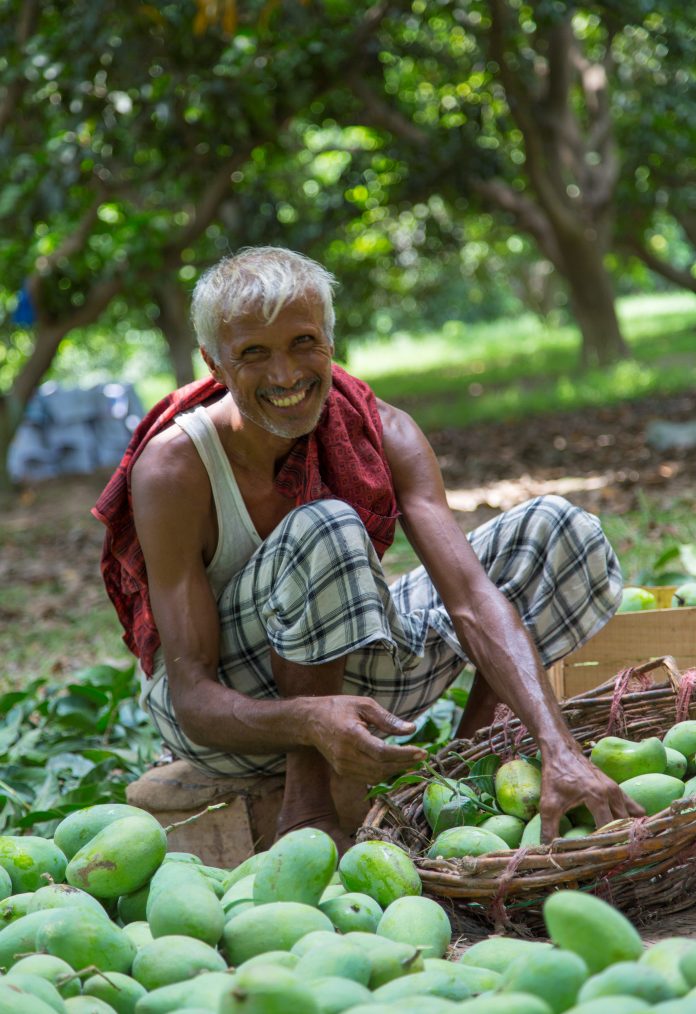
Adoption of modern farming propels country’s export share
By: Syeda Masooma
We all celebrated Pakistan’s win over India in Champions Trophy 2017. There is one more area where we have comfortably left our neighbors behind – Mango exports. India has managed to remain on top of the ladder for quite a while but lately it disappointed its customers with its exports. While India produces 36% of the global mango production, it shares only 3% of the export market.
While India loses out on its quality, Pakistan races to gain the title of the world’s largest exporter of mangoes. Middle East is one of the world’s biggest markets for mangoes, but Pakistan has traditionally had more luck in the European market with its sweet smelling yellow fruits. Pakistan has been exporting mangoes to UAE, Singapore, Malaysia, Canada, Europe, and Saudi Arabia among others. Recently, South Korean, Chinese, Japanese, and USA markets have also opened for Pakistani mangoes. Pakistani mango producers also brought Vapour Heat Treatment (VHT) plant which costs millions of rupees to improve the yield.

In 2014, Pakistan produced merely 1.72 million tonnes of mangoes as compared to India’s production of 4.67 million tonnes. However the same year Pakistan made its mark on the mango market with exports of 65,000 units as compared to India’s export of 42,998 tonnes. In 2015-16, India could only export 36,000 units while Pakistan shot up the mark to 1,27,000 units fetching around $68 million in foreign exchange.
This year, local producers were attempting to product north of 19 million tonnes and cross the 2 lac metric tonnes export number of mangoes. However due to a longer winter season and strong winds in Punjab – which accounts for 67 percent of the total production in the country – the mango production is expected to decline, which has led Pakistan Fruit and Vegetable Exporters, Importers and Merchants Association (PFVA) to continue with the export target of 100,000 tonnes again this year.
34. Social Entrepreneurs on the rise

DoctHers, NexSource, ConnectHear, leading the way
By: Arbab Ibrahim
Entrepreneurs contribute significantly to society. They are risk takers and challengers who make things happen. They usually have keen minds that look for a problem and find viable solutions. Entrepreneurs are not only important to the society in the sense that they generate profits for themselves but they also create employment for others. The success of the Silicon Valley in California is a legendary example in this regard.
For countries like Pakistan, where it is hard to find good jobs, entrepreneurs make their own way and try to find solutions to common problems, usually with very little other than their ingenuity.
A testament towards the growing trend of entrepreneurship is a growing number of entrepreneurial ecosystems. There is a significant increase in the number of incubators, co working spaces, and other support players since 2012.
Entrepreneurship is on the rise in Pakistan but what is more important is that social entrepreneurship is also on the rise. What distinguishes social entrepreneurs from contemporary entrepreneurs is that while the main concern of most mainstream entrepreneurs is the gain of profits, social entrepreneurs aim to give back to the society with little to no profits in their enterprises. Some of the most commenable social entrepreneurial initiatives in Pakistan lately are DoctHers, ConnectHear and interest free loans to the poor by Akhuwat Foundation..
Some of the most commenable social entrepreneurial initiatives in Pakistan lately are DoctHers, ConnectHear and interest free loans to the poor by Akhuwat Foundation..
DoctHers is a startup which aims to connect female health professionals to people who could not either afford quality doctors or could not reach them. The doctors see their patients through video conferencing. The initiative is especially important because it helps women doctors to participate as only 25 percent of the female medical graduates work after their graduation. While 80 percent of the people enrolled in medical schools are women.
ConnectHear is another startup which is trying to help the deaf and the mute people in Pakistan communicate easily. The interesting part of the project is that the project has been conceived by young university students. Their initiative aims to help the deaf and the mute by developing a video based Pakistani sign language interpreting app. Currently they connect the deaf to an interpreter through video calling.
Areej Al Medinah, an 18 year old student at Habib University is a co-founder of the project and believes that “social entrepreneurship is all about sustainable profits, where one is not entirely focused on their profits but are also actively trying to solve the community’s problems and serving it in a way.”

Nexsource Pakistan is another example. They are giving interest free loans to the poor through their microfinance venture Akhuwat Foundation. Although the ideology behind Akhuwat is a religious one, it does not discriminate based on the caste, creed or the religion.
It is great to see this growing trend of altruism where instead of focusing exclusively on profits; entrepreneurs are thinking above themselves and contributing to the society as well.
35. The rise of corporate philanthropy

Collaboration of government and non-government forces come through in times of crisis
By: Arbab Ibrahim
For a country like Pakistan, which has a severe strain on its resources and struggles to fight poverty and low human development, provision of even basic civic facilities such as affordable health care and proper education to a large segment of the society is a tough ask.
Many non-governmental organizations step in to fill the void, and thus play an important role in the social and economic uplift of society. Organizations like the Edhi foundation, the Citizens Foundation, Shaukat Khanam Trust and Aman Foundation rely on charity from individuals and corporations.
Development does not stand alone. It involves an intricately woven linkage and collaboration between the government, the civil society and the private sector, each of which contributes to the resource base in its own unique way.
While Pakistanis are some of the most generous people on the planet, we have yet to recognize and understand that social development is not the sole responsibility of the government but of the society as a whole.
The philosophy behind Corporate Social Responsibility (CSR) or Corporate Philanthropy is to achieve customer loyalty and goodwill through contribution in social causes at large and giving back to the society that has helped a company earn its profits along with enhancing benefits for the businesses themselves.
It is heartening to see that there has been a steady rise in the amount of money Public Limited Companies have invested in philanthropy over the years despite recent economic difficulties.
From just Rs0.2 billion in the year 2000, the amount has risen to the notable figure of Rs7 billion in 2015, according to a research done by the Pakistan Center for Philanthropy. This translates to an increment of 30 times the amount taken in the base year, i.e. 2000.
While an interesting trend was that in testing times, like the earthquake in 2005 and the severe floods in 2011, the corporate sector stepped up its philanthropic contributions manifolds and did not let the donations fall even in the subsequent years.
In the end I would like to conclude by saying that on completing our 70 years of independence we do feel proud and patriotic but we should remember that the highest form of patriotism is to become agents of change and to help the underprivileged in the society.
36. The growth potential

As seen with international ride-hailing services setting up shop in the country
By:Aisha Arshad
In recent years, after the launch of 3G and 4G technology in the country, there has been a rapid growth in local startups and technology based business ventures. These have not only promoted the growth of entrepreneurial culture in Pakistan but also provided opportunities to people from related fields to earn employments from the private sector on a large scale.
Amidst the fast growth of local ventures, many internationally established tech startups also noticed Pakistan as a potentially strong market and the likes of Rocket Internet etc. are now a household name in the country.
Last year witnessed entry of more than one tech based startup; particularly those related to online ride- hailing business like Dubai based Careem, USA based Uber and Turkey based A-Taxi.
After the entry of these ride-hailing services a rise in self-employed people have been seen in the country. Many, who were previously unemployed, underpaid or were looking for part time opportunities have joined these online cab services and now run their own job cum business which in return helps them earn living.
Students, females, unskilled workers and even qualified professionals – with settled jobs in banks and FMCGs – have joined the bandwagon and enabled themselves for a sustainable and in some cases additional earning; some of them taking home up to six digits earning every month.
A large number of Pakistanis have also returned from the Middle East, Malaysia and other foreign countries to join the cab-hailing companies and earn a decent income in their own country.
Albeit many of these foreign returned individuals were not doing a white-collar job abroad, they say that their earning with these services is somewhat the same as to what they were earning back in those countries – the only comfort is being at home close to their families.
This just goes to show that if provided with ample opportunities of a feasible nature this country and its individuals have the potential to curb their problems with simple solutions. Although the unemployment rate in Pakistan is now 5.90 percent; with further influx of such technology based companies and the new avenues they bring with them, the day is arguably not far when the picture will be better and brighter.
37. Population census 2017 completed
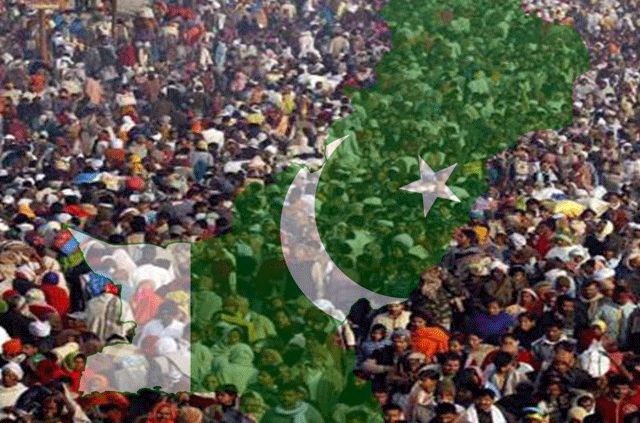
Now to making sure the report is not put in cold storage
By: Yousaf Nizami
The sixth national population census was held this year after 20 years, an activity that should be held every 10 years. The collection of data from over 35 million households took a period of three months but the process of getting an otherwise reluctant and lethargic government took some doing.
The activity is expensive to begin with but more so than that it is not that big a election slogan as making a motorway or powerplant may be but it is still a constitutional requirement. The unfortunate delay in its being held is therefore understandable – a simple case of not giving it priority. It took constant bashing of the government from the previous Chief Justice of Pakistan (CJP) Anwar Zaheer Jamali to give the activity the necessary attention it deserved.
Jamali correctly pointed out repeatedly that the elections of 2018 without this census would be a joke. At one point the frustration created by the government’s inaction on the matter forced the CJP to consider summoning the Prime Minister at the time Nawaz Sharif. Thankfully better sense prevailed.
There have definitely been stark changes in the population numbers of since 1998. That means that under article 51 of the constitution the seat share in the National Assembly will also need to be revised. Also it is quite ridiculous to formulate national policies when lawmakers don’t have a clue about how many people are living in the country.
The census is not just a headcount either. It provides other vital information as well such as the road network, number of schools/hospitals in different constituencies. This information is necessary to deploy resources effectively and efficiently.
Once the full report is released the ECP will have the task to redraw boundaries to give the elections true meaning. With elections less than a year away there is scepticism whether this will be possible. But right now the completion of the exercise after 20 years instils some hope in the country.
38. Informal GDP, the secret strength of Pakistan’s economy

Pakistan is capable of collecting 22.3 percent of the GDP in taxes: World Bank
By: Farooq Baloch
The undocumented or informal gross domestic product (GDP), is the secret strength of Pakistan’s economy, implied an April-2012 report by Bloomberg Businessweek.
Quoting Sayem Ali, country economist at Standard Chartered Bank Pakistan, the report said everything from auto parts to sports goods, knitwear, clinics, and beauty salons falls into the informal economy. “All these make significant contribution to employment and income, and that is one reason why the [official or formal] economy is still growing,” he said.
According to Businessweek, Pakistan’s underground or informal economy is 50 percent of its official output, which was estimated at $200 billion back then. The country’s tax collection at the time was 8.6 percent of its GDP, which was among the lowest in the world.
Five years later, the country became a $300 billion economy, growing at 5.3 percent, a 10-year high, in fiscal year 2017. Yet, its tax collection remains appallingly low — a clear indication that the exchequer has not been able tap into the grey economy.

According to a recent report by the World Bank, Pakistan has the capacity to collect 22.3 percent of the GDP in taxes, yet its projected collection is only 12.5 percent.
“Major tax evasion is taking place in trade and industry but nobody cares because this is the vote bank of the incumbent government,” Shabbar Zaidi, Partner at A. F. Ferguson and Co. told Profit in a recent interview.
The country’s most sought-after tax expert says traders, which are about one-fifth of the economic output, and unorganized services (doctors and lawyers, for example) that contribute 10 percent to the GDP do not pay taxes. The Federal Board of Revenue is taxing only a quarter of the GDP, he adds.
The government, which has been facing a fiscal deficit (4.1 percent based on latest projection) for many years, can turn this lost revenue into real opportunity. For example, a recent disclosure by the FBR says a Lahore-based tyre dealer alone evaded taxes to the tune of Rs900 million.
39. Part of the next 10 emerging markets
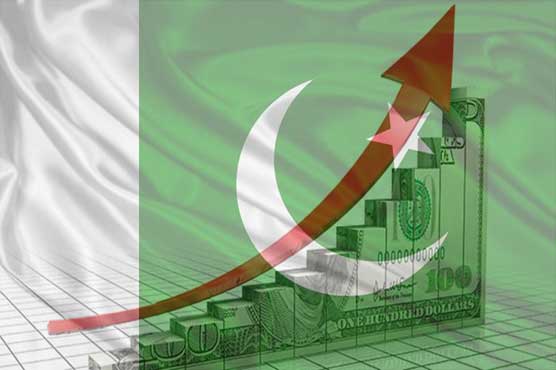
International community remains bullish on Pakistan
By: Farooq Baloch
In May, 2016, BMI Research, a Fitch Group Company, shortlisted 10 emerging markets that are set to become new drivers of economic growth over the next decade.
“We forecast the 10 countries will transition into key emerging markets and cumulatively add $4.3 trillion to the global GDP by 2025 (roughly the equivalent of Japan’s economy currently) providing significant opportunities for investors,” BMI Research said in its report.
These 10 countries are: Bangladesh, Egypt, Ethiopia, Indonesia, Kenya, Myanmar, Nigeria, Pakistan, Philippines and Vietnam.
“Pakistan will develop as a manufacturing hub over the coming years, with the textile and automotive sectors posting the fastest growth at the beginning of our forecast period,” Business Insider said in a July-2016 report on Pakistan’s inclusion in the list. “Domestic manufacturing investment will be boosted by the windfall from lower energy prices compared to the last decade, and improved domestic energy supply,” it added.
The BMI’s list comes more than 10 years after Goldman Sachs had coined the term, Next11: a similar list that also included Pakistan. “The N-11 could reach two-thirds of the size of the G7 economies by 2050,” the investment bank estimated in 2005 .
Being part of these lists with clearly shows that the international community remains bullish about Pakistan’s economy. It is up to us to actually work towards the positive predictions that are places in these research reports rather than just be pleased about being mentioned in such research papers.
40. Pakistan, an underrated economy?

Predictably Unpredictable
By: Farooq Baloch
“Each year I perform the exercise of picking what I think is the most underrated (and overrated) economy in the world. The designation is tricky, because it can go to an ailing country with an excessively bad reputation or maybe to a known star with virtues beyond what people understand,” Tyler Cowen said in a February-2017 article for Bloomberg.
“This year I see a clear winner: Pakistan,” Cowen said.
The opinion piece was published about the same time when the country was receiving positive reviews from leading international publications: The Wall Street Journal talking about declining poverty rate and the rise of Pakistan’s middle class and Forbes’ report comparing Pakistan to India are a couple of examples. Add to that, a stable outlook given to the country by top credit rating agencies, Standard & Poor’s, Fitch and Moody’s.
Among other examples that supported his argument, Cowen also mentioned the stellar performance of Pakistan Stock Exchange, which rose 46 percent (in dollar terms) the previous year – he may not have imagined though what the market, and even the country, were up for.

Since Cowen’s article, a lot has changed: Moody’s has already cautioned how domestic politics and geopolitical risk continue to represent a significant constraint on the rating, and the stock market has shed more than 8 percent.
But isn’t this uncertainty and unpredictability, part of Pakistan’s dynamics, market analysts ask me, pointing to even worse developments that could not hold the country back.
“Emerging-economy equities are not in every way representative of how the broader economy is doing, but again we are talking “underrated” here,” Cowen had said when he chose Pakistan as 2017’s most underrated economy.
If one can borrow an analogy from cricket, we are ‘predictably unpredictable’: from least favorites to champion is how Pakistan finished its journey in the International Cricket Council Champions Trophy 2017. And this view is shared by many across the world.
When Azhar Ali dropped Virat Kohli at first slip in the final, the world may have thought Pakistan lost – Kohli can single-handedly win any game regardless of how difficult the target is — but he was gone the next ball.
“Pakistan cricket at its best, one minute down, next minute up,” the commentators said, adding these two balls sum up Pakistan cricket for them.
41. Our military might
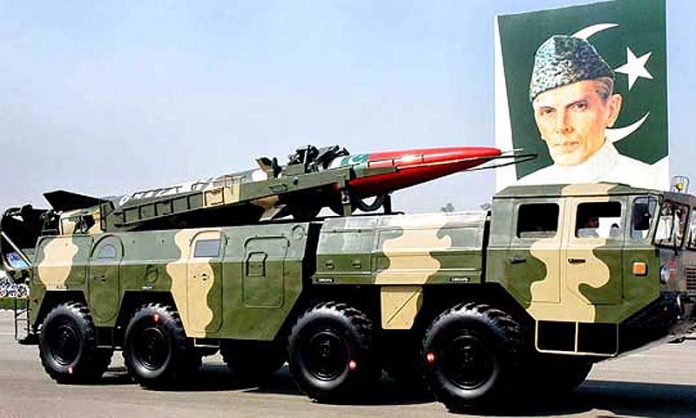
Need to become stronger economically as well
By: Agha Akbar
Having the sixth largest military force in the world, Pakistan is the first and only Islamic country to attain nuclear power. The country’s missile technology is one of the best in the world. The country has produced a large quantity of various types of missiles since it has become a nuclear power.
Being nuclear power acts as a necessary deterrent to neighbouring and western countries. In addition to being nuclear powers countries India, USA and Russia for example are economic powerhouses as well.
It’s a long road to realizing our full economic potential but when, not if, we reach it, we can become an international force to be reckoned with.
42. Agriculture sector gets its due

Agri credit on the rise
By: Farooq Baloch
Pakistan is an agri-based economy, the sector provides livelihood to more than half of the country’s employed workforce and accounts for nearly a quarter of its economic output, yet credit to this important sector of the economy is appallingly low at less than 6 percent.
That said, the State Bank of Pakistan’s latest report indicates there may be a change in the offing: banks have surpassed the agricultural credit disbursement target of Rs700 billion, a target set by Agricultural Credit Advisory Committee (ACAC) for fiscal year ending June 30, 2017.
Agri Lending banks have disbursed Rs704.5 billion in FY2017, which is 17.8 percent higher than the Rs598.3 billion they disbursed in the previous year.
The central bank said the agri outstanding portfolio increased to Rs 405.8 billion at the end of June 2017, registering a hefty growth of 17.4 percent compared with the last year’s position of Rs345.6 billion. Similarly, it said the agricultural credit outreach has increased to more than 3 million farmers in FY2017, up from 2.4 million of the previous year.
“The achievement of agriculture credit disbursement target was an uphill task due to high risk perception of banks about agri. financing and volatile prices of agri. Commodities,” the SBP said. However, the central bank continued to implement its multi-pronged strategy for achievement of agri-credit target set by government. The SBP’s role is commendable for this improvement, but the country’s agriculture sector still faces many challenges, such as flooding as result of extreme weather events, loss of produce due to lack of international best practices and a poor logisitical and supply chain network as well as access to credit. Given, agriculture is the largest source of foreign exchange for the country and feeds the whole urban and rural population, the credit to agriculture needs to increase consistently — especially when the bulk of country’s forex reserve are a function of loans.
The SBP’s role is commendable for this improvement, but the country’s agriculture sector still faces many challenges, such as flooding as result of extreme weather events, loss of produce due to lack of international best practices and a poor logisitical and supply chain network as well as access to credit. Given, agriculture is the largest source of foreign exchange for the country and feeds the whole urban and rural population, the credit to agriculture needs to increase consistently — especially when the bulk of country’s forex reserve are a function of loans.
43. Credit to the private sector is taking off!

Shoulder: Banks heading back to the basic
By: Farooq Baloch
“Credit greases the engine of economic growth. In particular, loans to private-sector businesses are considered a mainstay of the modern economy: credit allows private-sector businesses to invest in new plants, machinery, inventory and human resources,” Kazim Alam wrote in a July-2016 article for Express Tribune. “New jobs are created, consumption goes up, and so does the GDP,” he added.
On the contrary, the financial journalist said, “Slow growth in private-sector credit uptake leads to fewer jobs, limited expansion in businesses and stagnant income levels. In short, credit is the oxygen that keeps the economy going.”
If one were to agree with Alam, they would certainly be worried about how our banks have been operating over the past few years.
In one of our recent reports, we mentioned that more than two-thirds of banks’ earnings come from government treasury bills and Pakistan Investment Bonds. And, in the words of former finance minister Shaukat Tarin: some of these banks have almost forgotten how to lend.
In the same report, Profit had noted banks had been enjoying 5 to 7 percent risk-free spreads since the time central bank’s benchmark interest rate remained above 12 percent. As a result, they were not making any effort to earn from core banking: lending to private sector.
However, when the central bank started reducing its monetary policy rate in mid-2015, the banks suffered notable losses in the years that followed. With the SBP’s policy rate hitting 5.75 percent in May 2016 — its lowest level in the last 42 years — and still hovering at the same level, PIBs may not be that attractive for the banks.
While this may be bad news for banks, it is good news for the economy, since falling interest rates have put banks’ earnings under pressure and as result many of them resorted back to basics: lending to the private sector.
Most analysts, we surveyed recently, agree that business and economic outlook is positive and banks’ non-performing loans, a major obstacle to lending, have fallen now and they have started lending to private sector, and credit offtake is improving.

According to the latest statistics by the SBP, credit to the private sector increased to 4.7 billion at the end of June 2017, up 30 percent compared with Rs3.6 billion of fiscal year 2015, that is two years ago. Loans to private businesses have increased with the same proportion, standing at Rs3.9 billion at the end of FY2017 compared with Rs3 billion of FY2015.
That said, are these numbers, by any means, an indication that the economic engine has been greased? Maybe, not! Perhaps, more needs to be done.
“Banking has a very small footprint in the economy, which is a basic problem that needs to be addressed,” Tarin told Profit, referring to banking’s contribution to the GDP, which is about 33 percent, and that’s without taking into account the informal economy.
“The biggest challenge that the policy makers and banks have is to increase this footprint,” he said.
44. 2017: the year to finally defeat Polio
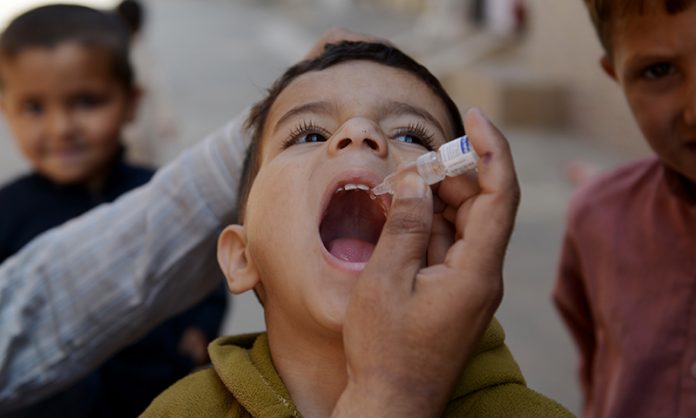
Shoulder: One final push
By: Farooq Baloch
“They [Pakistan] have done a great job – not a single case has been reported from FATA (Federally Administrated Tribal Areas), one of the most challenging areas to reach. Let’s go that last mile together,” Joanna Reid, the head of UK’s Department for International Development in Pakistan, said in a press statement earlier in August. “2017 could be the year when Pakistan defeats polio,” she said.
The UK announced $130 million earlier this year to help end polio in Pakistan, Afghanistan and Nigeria as part of a final push to get rid of this menace.
Pakistan has already paid a big price while fighting Polio: several innocent health workers and escorting policemen, who visited door to door for administering polio drops to children aged five or less, were killed in the line of duty. The country avoided a potential ban on international travel and had to seek support from religious scholars to issue fatwas in favor of the vaccine to achieve this progress.
However, the job needs to be completed: of the eight cases reported internationally this year, three came from Pakistan, which now has to give one final push to get rid of that crippling virus for good, so that we can have a healthy future.
45. A new breed of entrepreneurs

By: Farooq Baloch
“There is no denying that the business community is facing many challenges but we should look for opportunities even in these difficult times. If the situation was better, wouldn’t all the multinationals be here?” Muhammad Shahzad told this scribe in a past interview — he is Managing Director of Alpine Gelato, the fastest growing chain of ice cream parlors in Karachi.
Shahzad started his business as an ice cream producer from Hyderabad, supplying his products to retailers in the city and its neighboring towns. When the power outages hit their peak, these retailers refused to accept his ice cream, which required cold storage only uninterrupted power supply could ensure.
The 48-year-old suffered losses and almost went broke, but the entrepreneur within him wouldn’t give up. He decided to sell his own ice cream and opened his first retail outlet, then a second and third. Within a couple of years, he expanded his business to Karachi and now has a strong presence across the city.
Shahzad represents a new breed of entrepreneurs, better call it reverse brain drain, who left their lucrative jobs abroad and returned to Pakistan to invest and work here — the NEDian had left Australia where he was working in the ice cream division of Unilever.
Abid Butt, founder and CEO of E2E, a supply chain management company, is another example. The INSEAD graduate left his 15,000 euros a month job at Geodis, Europe’s leading logistics company, and returned to Karachi to start his own business.
Despite suffering a big loss initially, Butt was undeterred and worked his way up to build what has now become one of the very few multinational companies out of Pakistan.
However, these talented entrepreneurs have one experience in common: the state doesn’t do its job to nurture them and help them grow.
For example, Shahzad had to keep low profile because of persistent threats from extortionists belonging to political parties and he is not the only one complaining about it.
Afaque Riaz Ahmed, founder of Karachi Institute of Technology and Entrepreneurship (KITE), received a similar call for his science project for children: Robotics lab — besides KITE and Robotics, Ahmed also launched Cloud BPO, a high tech IT outsourcing company, along with his friend Yasin Altaf both of whom returned to Pakistan a few years ago after working with tech firms for 13 years in the Silicon Valley.
46. We have built great big things in the past
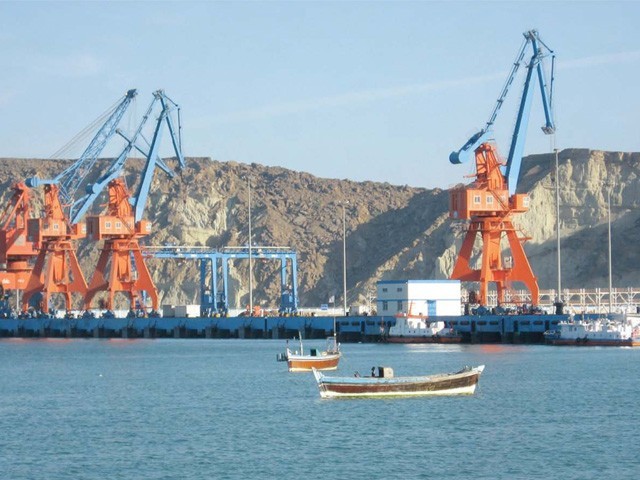
On to Gwadar now
By: Agha Akbar
Tarbela Dam is the world’s largest earth-filled dam and second largest dam overall. Connecting Pakistan and China, the Karakoram Highway is the highest paved international road in the world. The Khewra Salt Mine, the second largest in the world is in operation since the days of the Raj.
The world’s largest irrigation network is present in Pakistan. It serves 14.4 million hectares of cultivated land. The irrigation system is fed by water from the Indus River.
More recently Pakistan has also constructed the world’s largest warm-water, deep-sea port situated on the Arabian Sea at Gwadar in Balochistan province. Gawadar has been commissioned as the world’s largest deep-sea warm-water port on the Arabian Sea.
Already massive real estate development has begun in Gawadar as developers eye it as the new Karachi and a gateway to increased trade which in turn will have a positive effect on property prices there.
47. Cinema industry on the path to growth

Promotion of arts and literature on a high
By: Fatima Rehman
Compared to 10 years back, Pakistani Cinema Industry has evolved as a whole and introduced us to an entirely new genre that our audiences missed badly in the past few years. While watching Mission Impossible and movies like Terminator or Harry Potter, a patriotic Pakistani heart badly craved for movies reflecting their culture, and mehndis were all enjoyed over the rough beat of Bollywood songs instead of our local music. However kids aiming to be spiderman and Batman are definitely going to see a new phase as Pakistani Cinema comes back with a bang and content that is local and relatable.
With “Jawani phir nahi aani” , starring Humayun Saeed along with some voguish faces like Hamza Ali Abbasi, Ahmed Ali Butt and Sohai Ali Abro welcoming a mass that appreciates commercial cinema and by setting up new benchmarks by making worldwide gross of 49.44 Crores, followed by “Bin Roye” by making profit of 40.5 Corers the fact that came forth is that this is the experimenting stage of the Pakistani Cinema where it is acting like a teenager who can try all rights and wrongs and choose the best one for itself. Right now the viewer gets the treat as they witness diversity and the hotchpotch of various cultures giving a meaning for entertainment to people.
Cinema is assuredly expanding by providing grounds to few new players who hold the flagship of taking cinema to new horizons with a promise to preface this new era of entertainment and showbiz.
The time is here when we don’t need to fake Hurrahs in cinemas with movies like Namaloom Afraad, Actor In Law and Wrong No has certainly knocked all our doors and given us reason to pour faith in our heirloom once again.
Also movies like Moor follow the footsteps of the legendary name Shoaib Mansoor giving goosebumps to all our patriotic feels. Simultaneously, WAAR and Ghazi take you on a 360 degree ride where you feel the war scenes, unlike those in Pearl Harbor, Come and See or Deer hunter. The best thing about experimenting stage of Pakistani Cinema is that it is opening an opportunity for movies like Mah-e Mir and Manto that caters to a specific genre and are liked by particular types. You now enjoy lots of flavours in one cone of Pakistani Cinema.
Cinema is the most lucrative business in Pakistan but following the general perception, no one knows about it,” Nadeem Mandviwalla – whose company Mandviwalla Entertainment also manages Atrium cinemas in Karachi.
Actor in Law turned out to be the grosser of the year generating about 24 Crores whereas the grosser of the year for 2007, “Khuda K liye” hits the box office by 10 Crores approx. Such prominent increase in no.s shows the pull over of the audience towards the big screen and also the increase in seatings for screens by 20% as mentioned in boxofficedetails.com.
Films play an integral role in promoting arts and literature and since the dormant film Industry seems all awakened and geared up to welcome times when we would set trends and the whole world would be our playground, there seems a beam of hope!
48. Pakistani Companies operating abroad
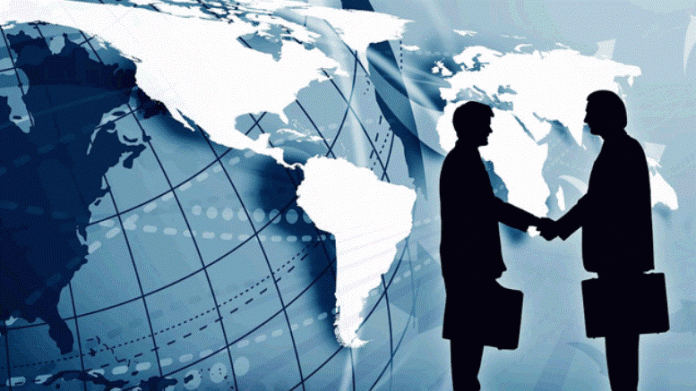
Hotbed of investment taking root abroad
By: Syeda Masooma
Pakistan is becoming a hotbed of investment for foreign companies. But at the same time there are several companies taking roots abroad. While the incoming companies usually bank their claims on cheap labor availability, the Pakistani brands moving abroad can boast about their sheer demand leading them to produce close to their markets outside Pakistan.
Nirala Sweets, Khaadi, Chen One, Junaid Jamshed, and Amir Adnan are among the few notable names with some banks like United Bank Limited and Habib Bank Limited. HBL has spanned across four continents as of today with a balance sheet worth approximately Rs 2.53 trillion, and an AAA long-term rating by JCR-VIS. While UBL has 12 countries to its list, with a balance sheet of Rs. 1.85 trillion.
To add to the Pakistani companies making a mark overseas, we also have at least three well-known names that are trading in US, listed on Over-the-Counter market. Fatima Fertilizer Company Limited was the first Pakistani company to get approval of the Securities and Exchange Commission of Pakistan (SECP) for American Depository Receipts (ADRs), with the trading symbol FTMFY. Pakistani Petroleum with the ticker PKKKY also joined the ranks, along with Align Technology. The company manufactures invisible braces, widely used by orthodontists in the USA, and is listed on New York Stock Exchange (NYSE) as ALGN.
49. War against terror

There have been successes but a lot still needs to be done
By: Umar Aziz Khan
Though there have been many misgivings about Pakistan’s war against militancy – some valid, others not so much – things appear to be turning on that front.
On the national scale, Operations Zarb-ul-Azb and Radd-ul-Fasaad seem to have not just mobilised our forces against the militants, but also played a great role in rallying public support against the scourge.
The restive Khyber-Pakhtunkhwa province has been given a much needed respite as the lebensraum of the militant networks has been diminished consistently.

All is still not well; though their frequency might have been reduced, there are still militant attacks all over the country. Most recently, Lahore, a city till now relatively untouched by frequent terrorist attacks has seen some gruesome attacks, all within the time period of six months.
Once all state institutions truly get on the same page about not making any distinctions whatsoever between the militant groups, regardless of any possible so-called strategic value, we can truly move towards putting this prickly problem behind us. The scourge of terror takes up the lion’s share of the impediments to our economic and business prospects as a country. Things can only improve once we get rid of it.
50. Rising tele-connectivity
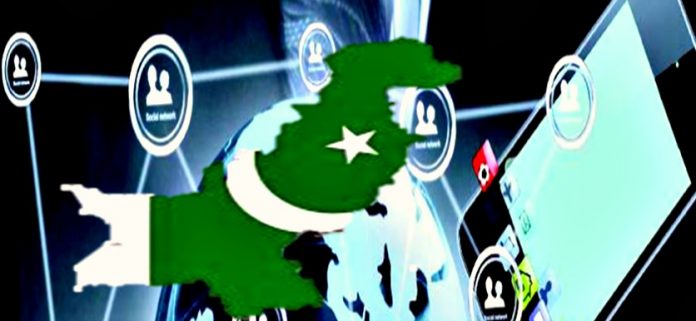
The seeds of remarkable growth truly lie in mobile internet
By: Umar Aziz Khan
Sometimes, when the stars align, and all the catalysts are in place, we can end up with things like the miracle of Pakistani telecom sector. As per the PTA, back in 2003-4, our national cellular teledensity stood at 3.29 per cent; in February, 2017 this statistic had roared its way to 70.24 per cent!
The catalysts, of course, are easy to define. Relatively stable government regulations of the sector, technological improvements which made cheaper phones possible, the economic miracle of “China, the world’s factory” and a rising middle-class with increasing disposable income.
The auctioning of 3G and 4G LTE spectrum by the incumbent government has sweetened the tele-connectivity deal further. Though the importance of teledensity in general cannot be overstated, but the seeds of remarkable growth truly lie in mobile internet. The much publicised successes of Transportation Networking Companies like Careem and Uber leverage mobile internet. As do a host of other local tech start-ups.
Expect mobile internet to disrupt more than one sector. Services, manufacturing and even Agriculture. Expect it to change the way people consume news. Expect it to change the way people engage with their own communities, hence changing the nature of politics itself.



